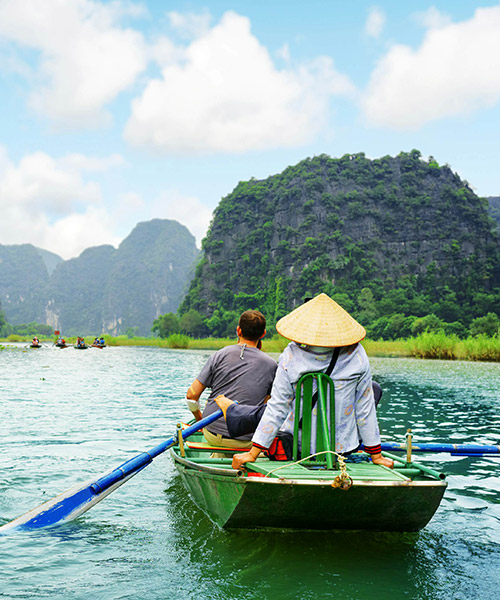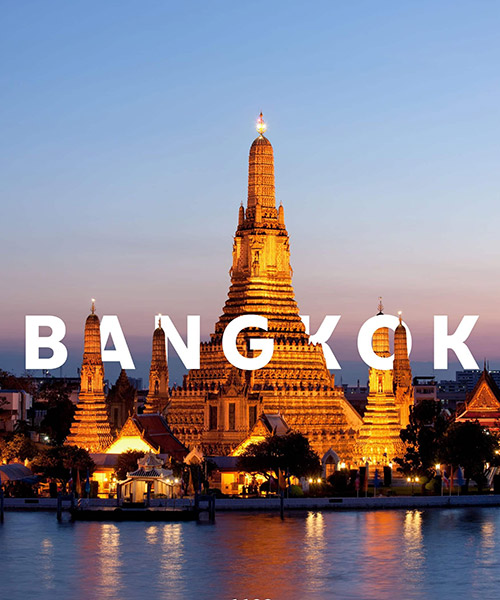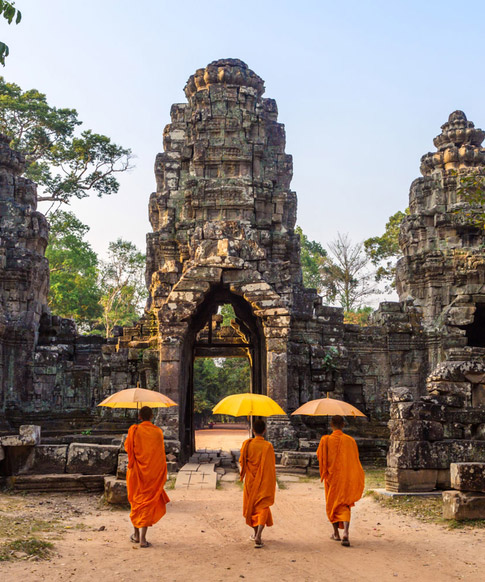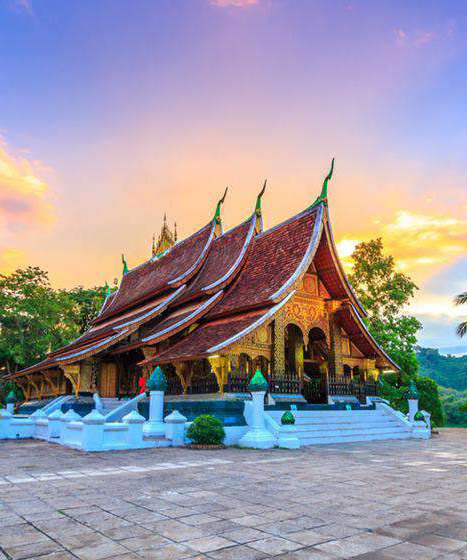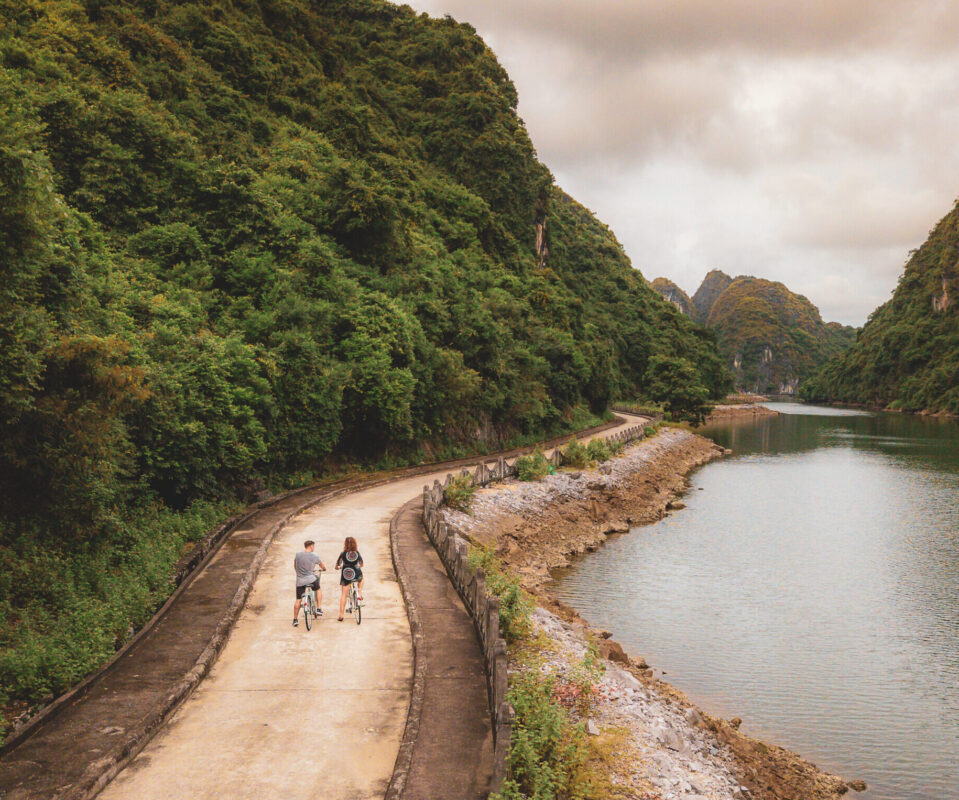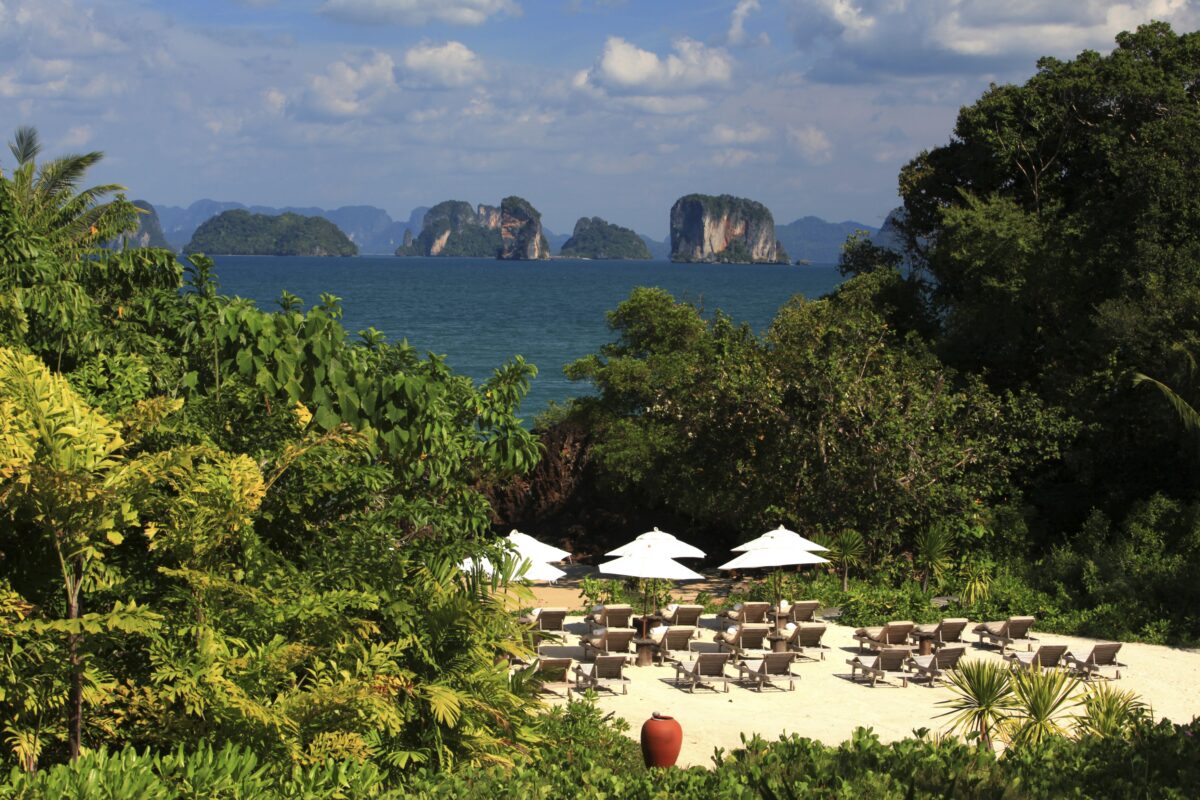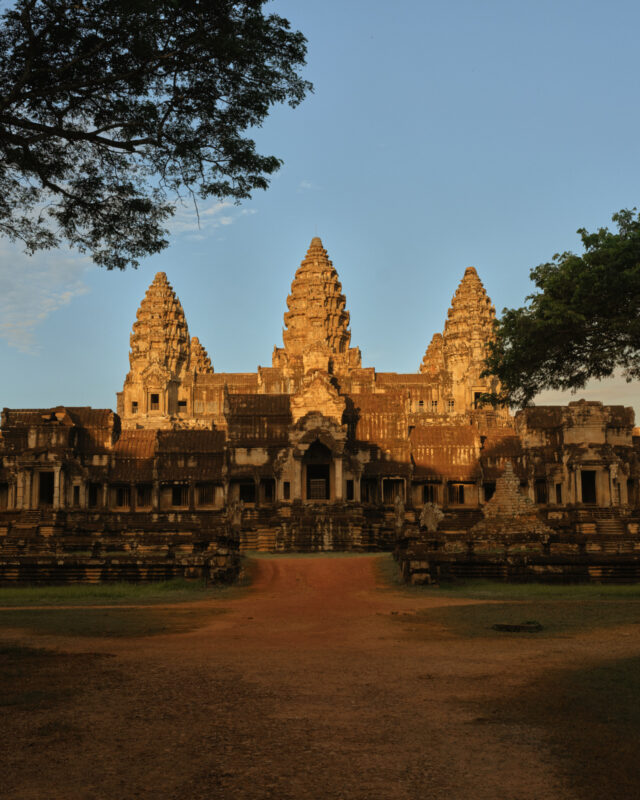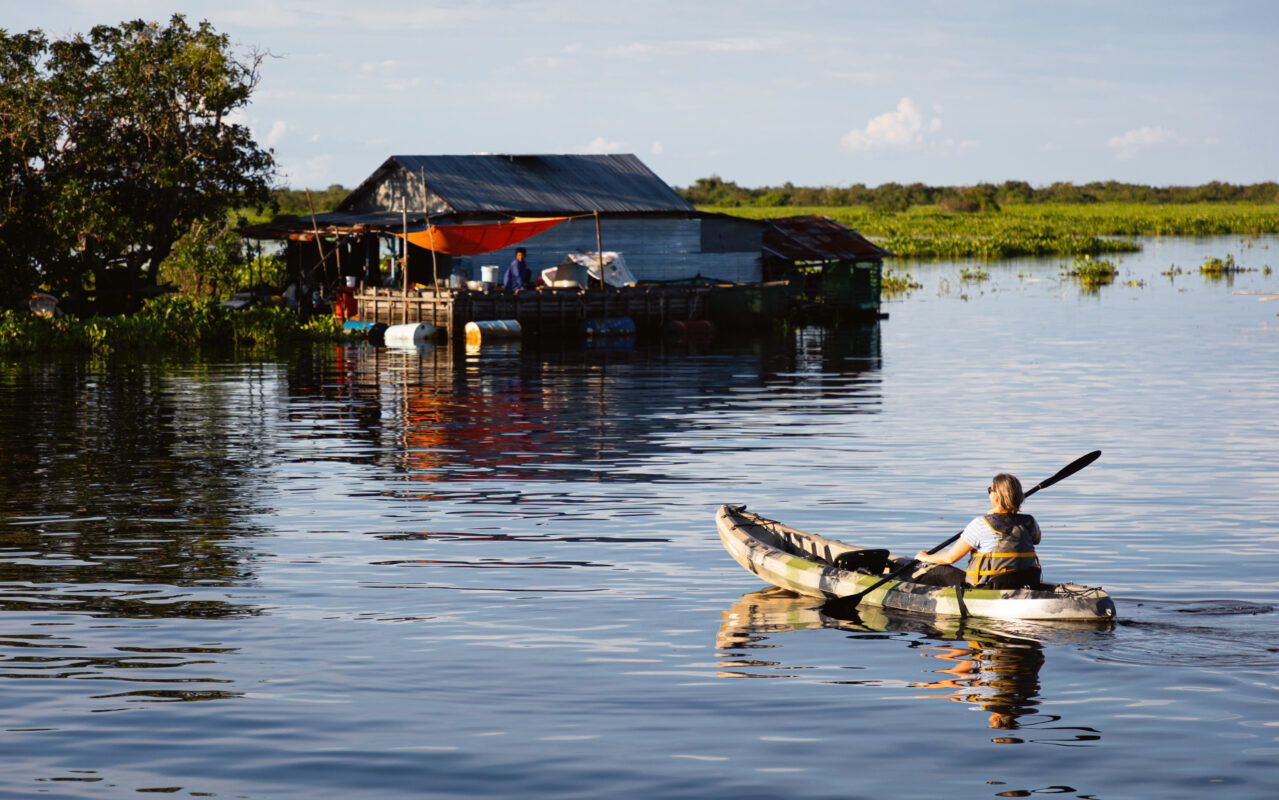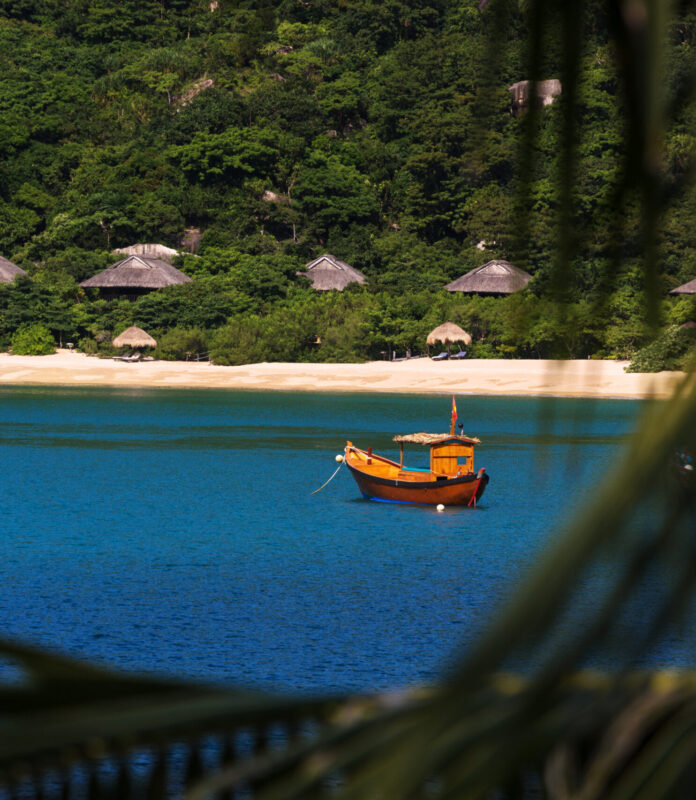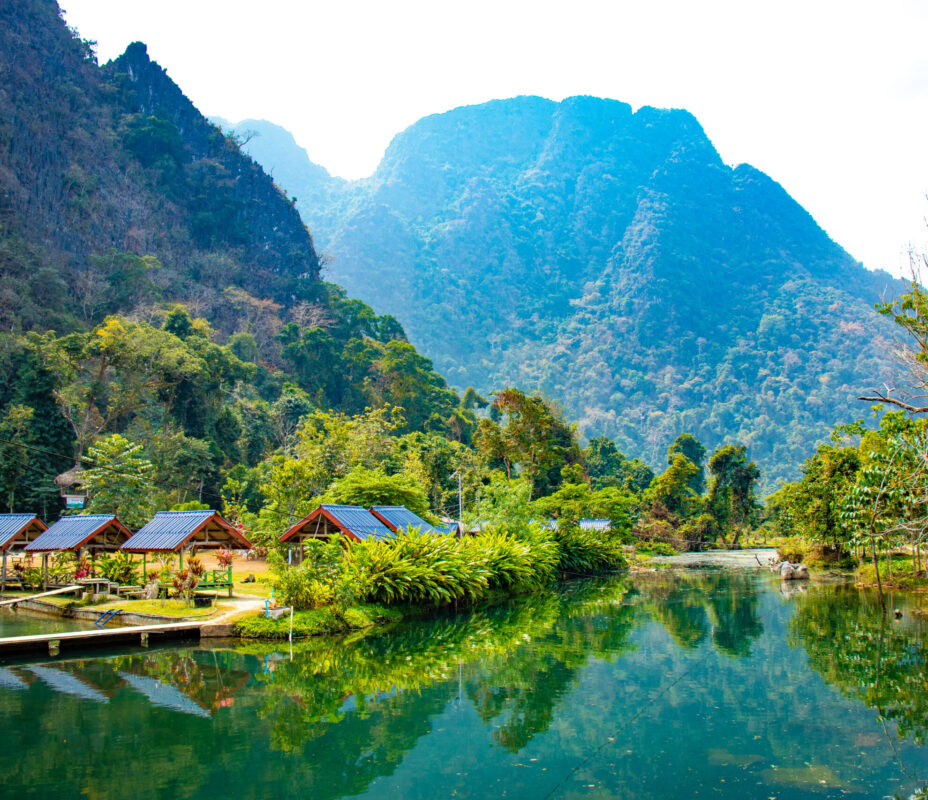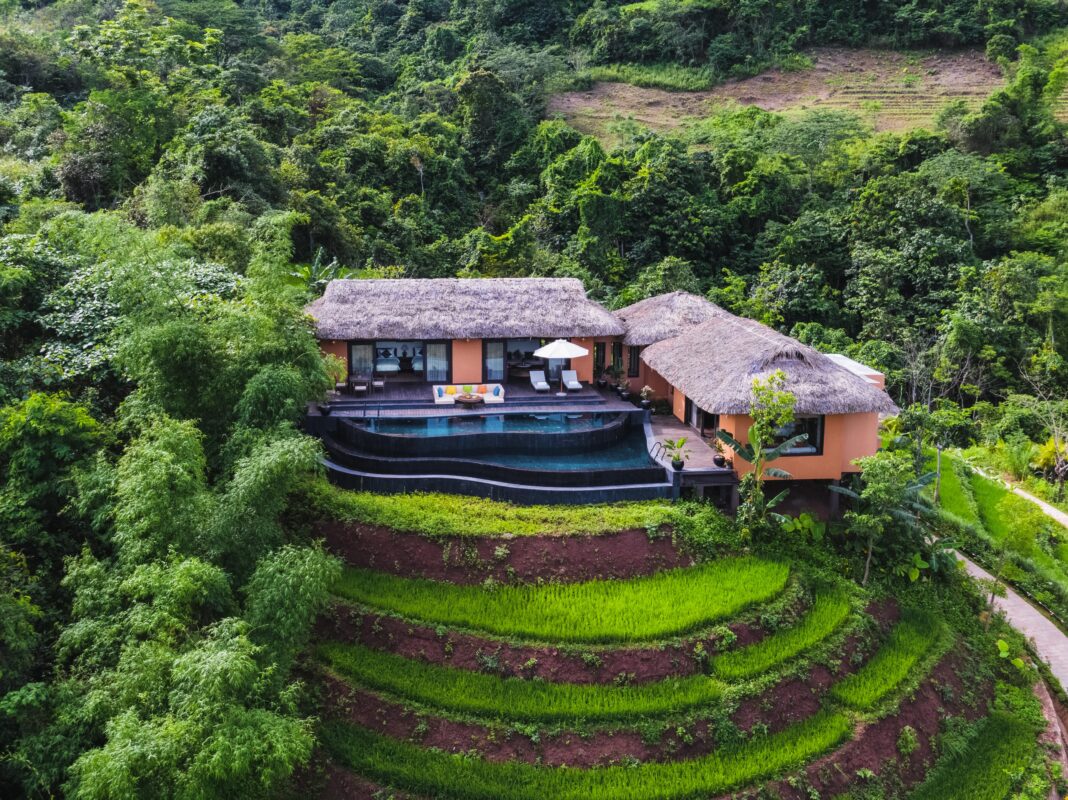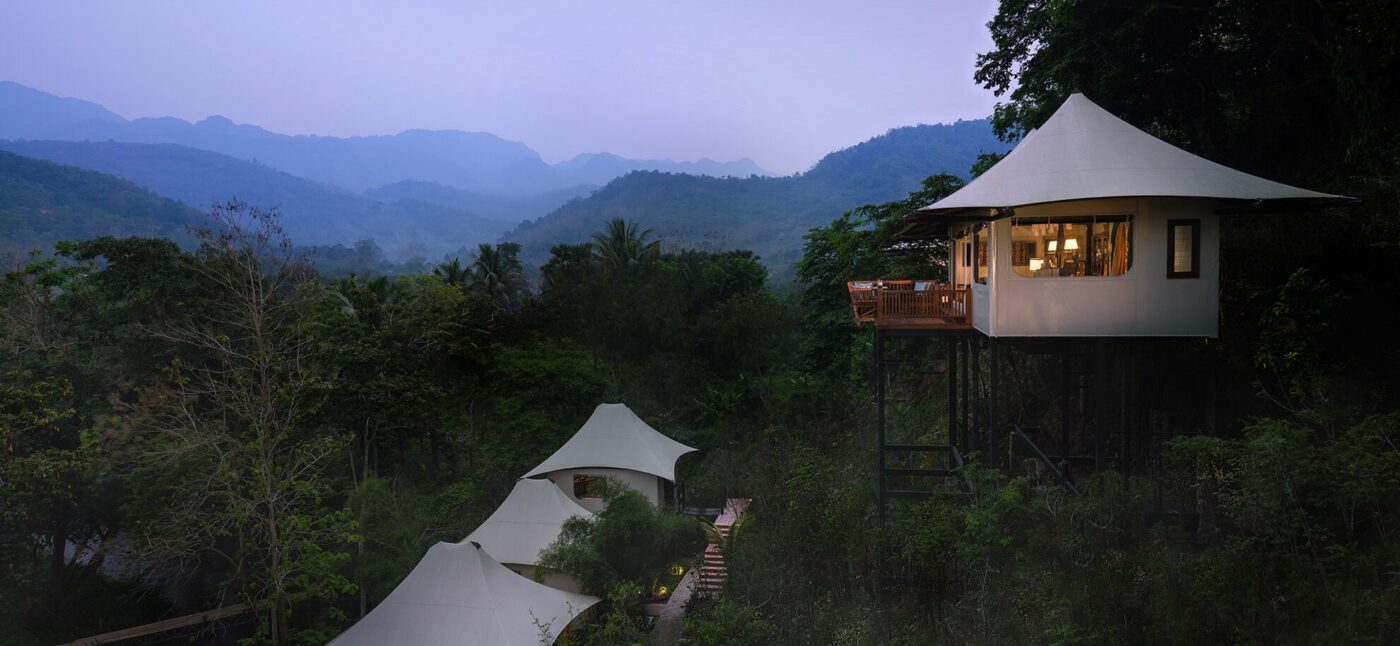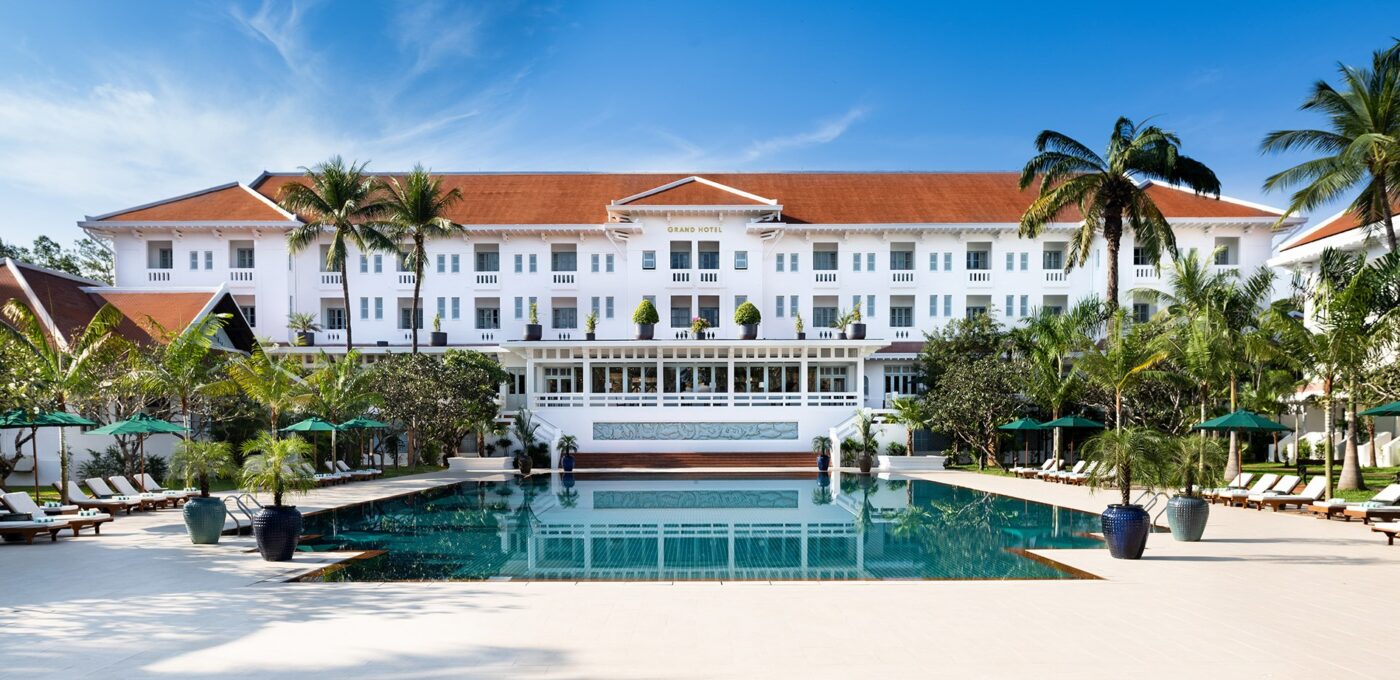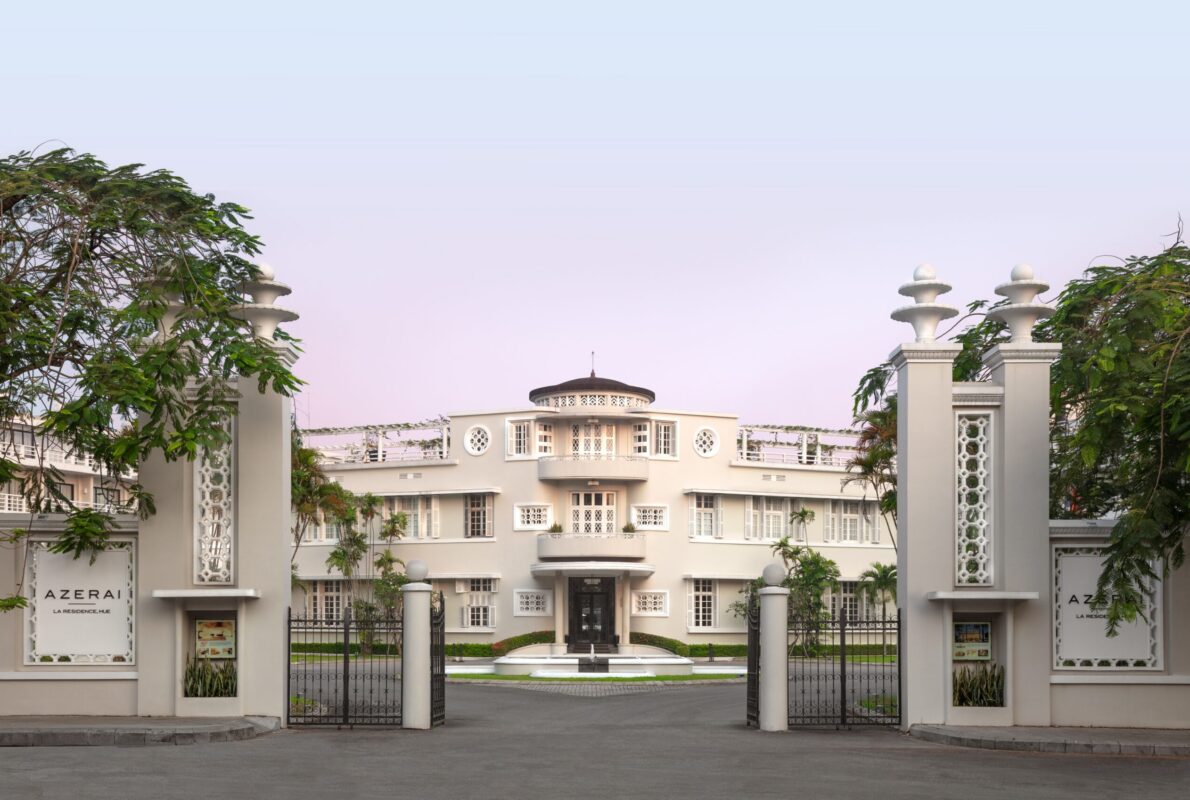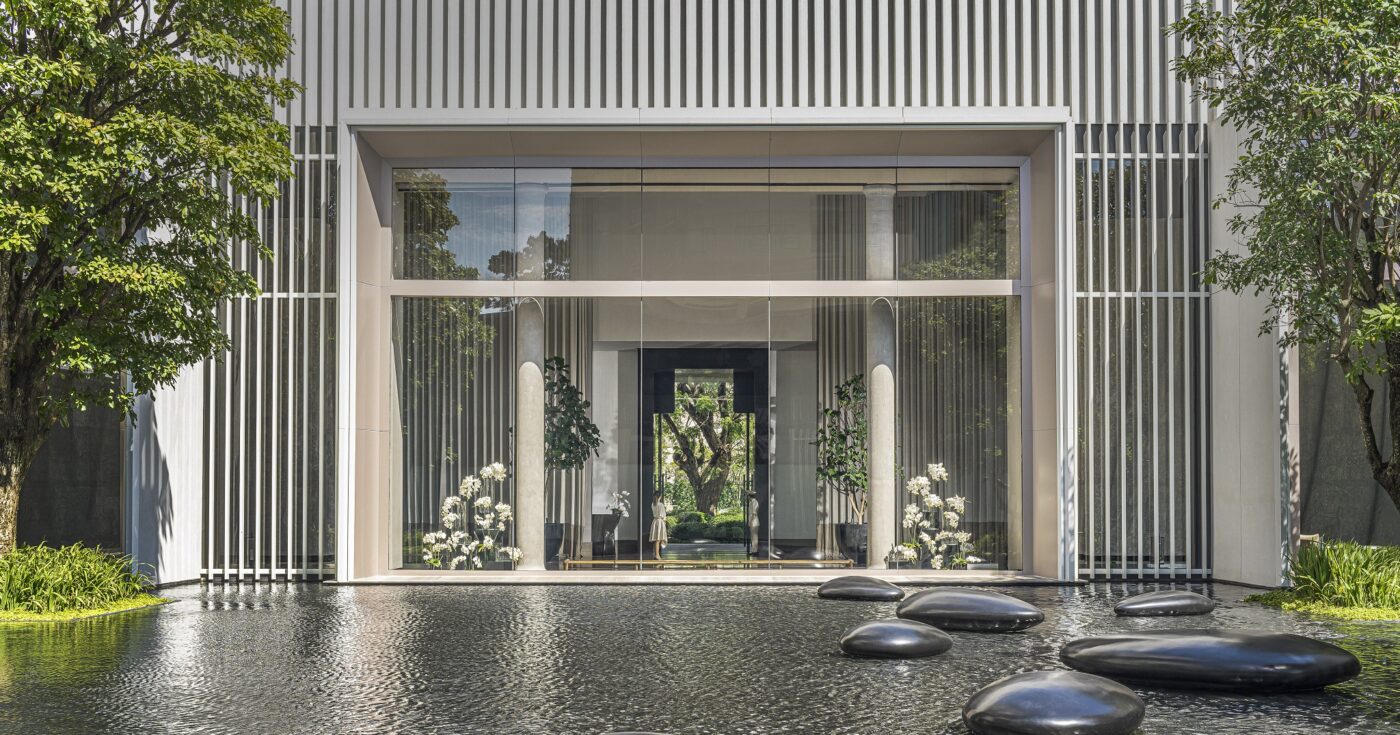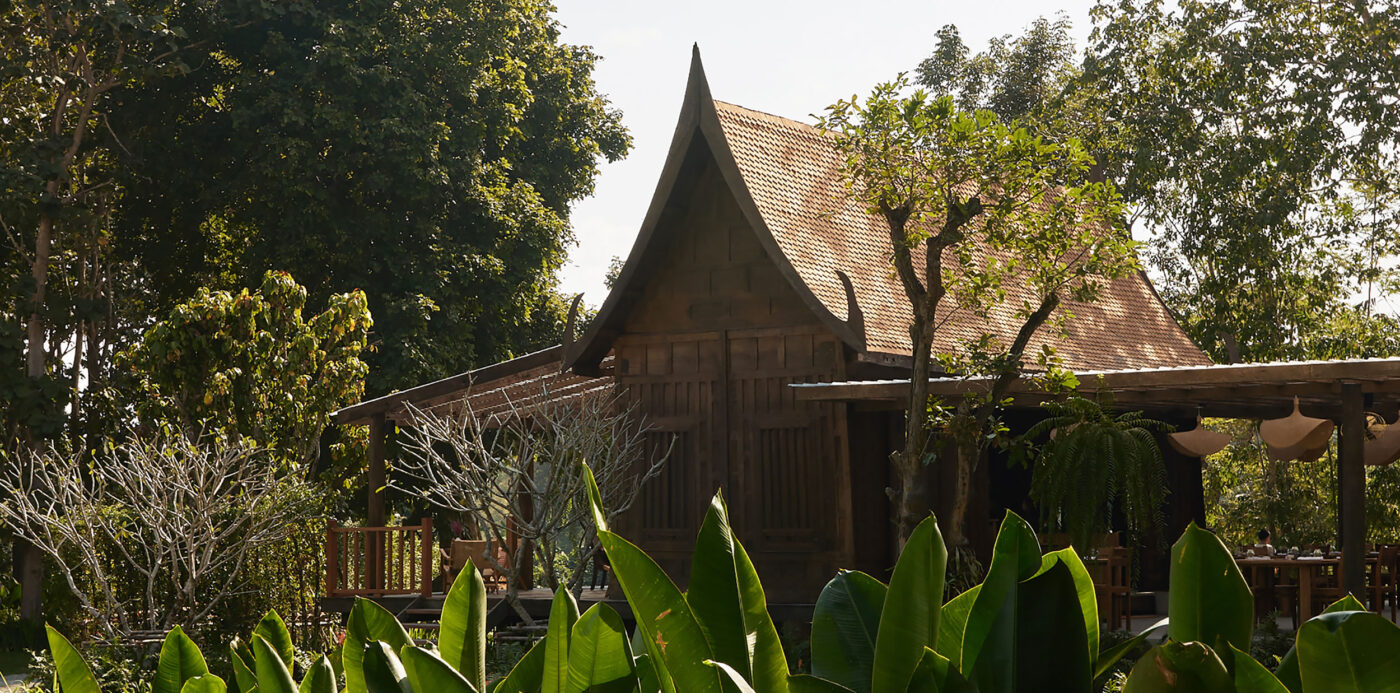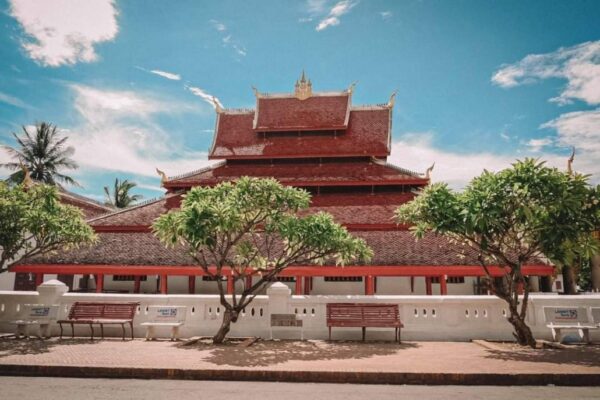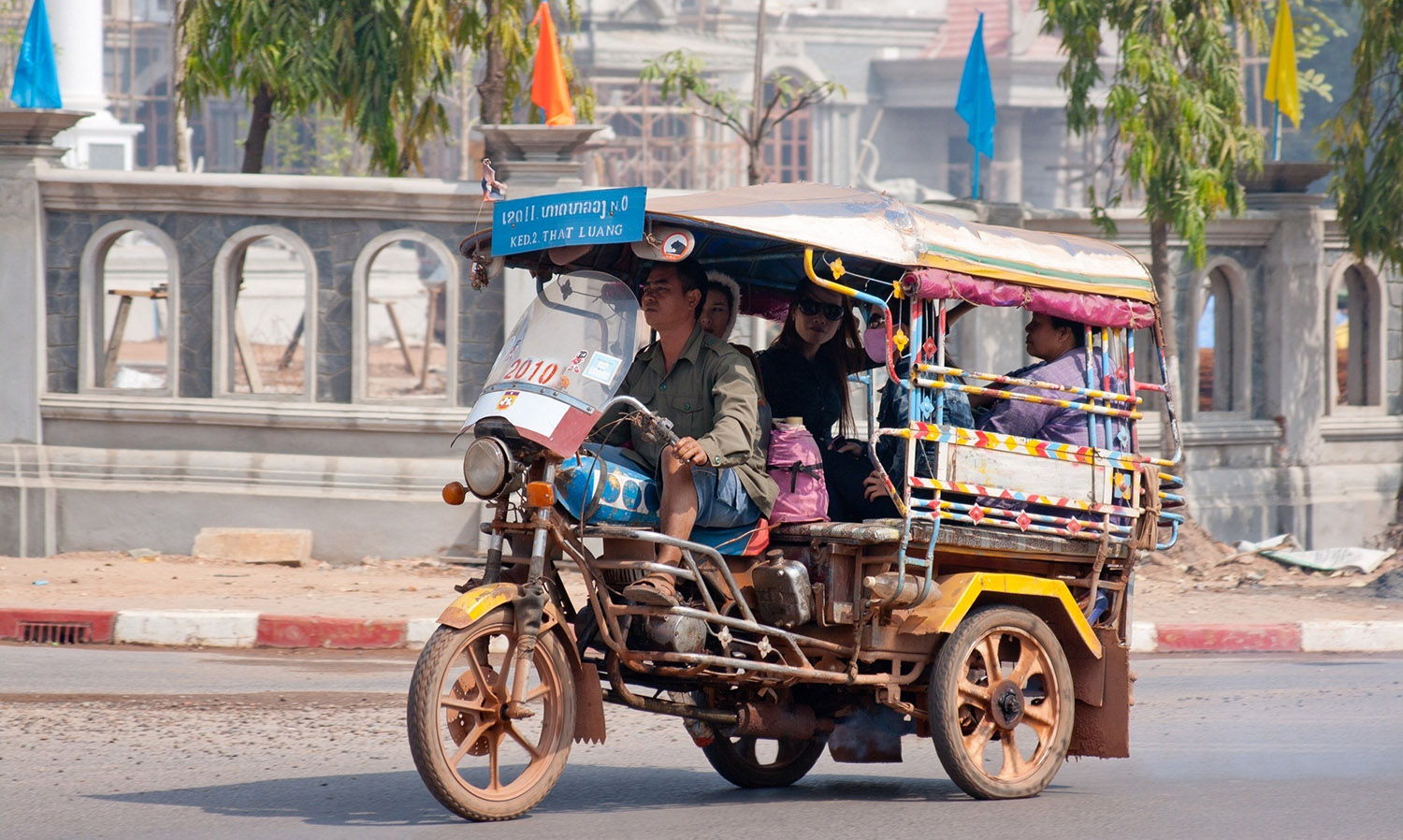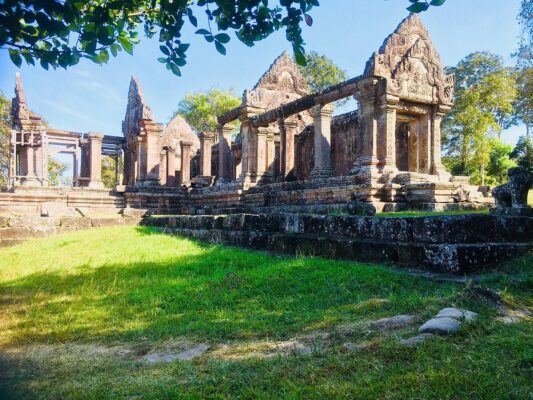Once a forgotten region of Southeast Asia, Laos is slowly becoming a destination for those seeking to sight-see off the beaten path. If you are planning a trip to Laos, this guide is here to help you get all the information you need.
Actually, Laos is not the first place that people think about when planning a trip to Southeast Asia. There is no world-famous cuisine, exotic beaches, or crazy nightlife, but the stunning scenery, laid-back pace of life, and nice locals will melt your heart. As the country is still quite undeveloped, especially when it comes to tourism, traveling through Laos requires planning and a little nerve. And our information will help you to prepare for your trip to Laos thoroughly.
Weather and when to go to Laos
Laos generally has a laid-back climate and no coastline which means there are no storms. The weather here is generally more affected by the altitude and topography, with a cooler mountainous north and a steamer delta-plain south. Laos has a sub-tropical climate in the center and south, with a more temperate climate in the mountainous north. The average temperature is around 29oC and it can drop in the cooler months to about 15 – 20oC. There are two basic seasons. The rainy season runs from May to October and characterized by downpours lasting a few hours every few days or so. The dry season runs from November to April or early May, and is subdivided into 2 distinct sections: from November to February, it is the cool dry season and from March to April, it is the hot dry season.
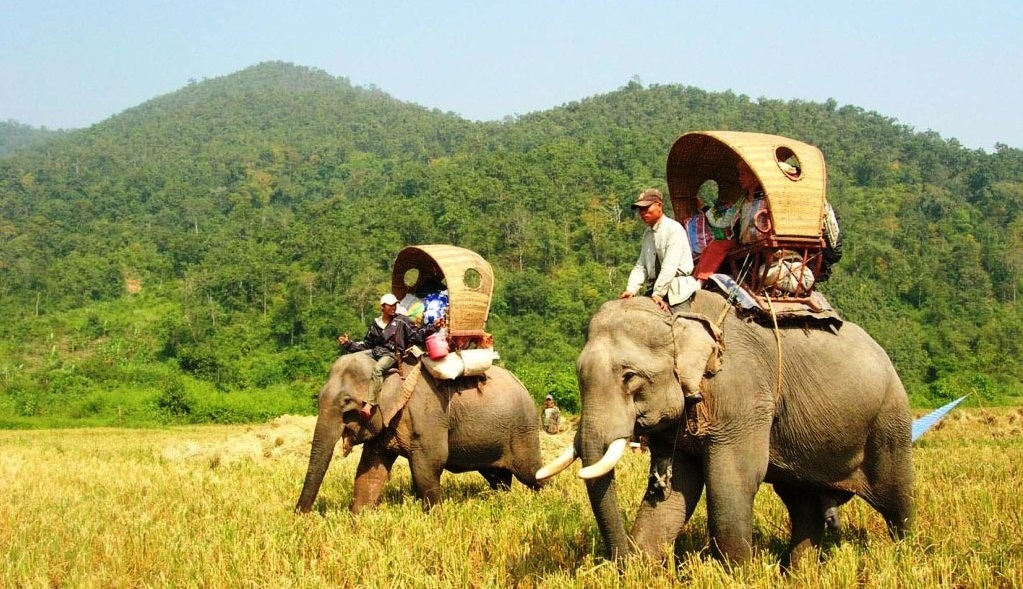
As things start to heat up in Laos in March and April, it will be hot and dry across the whole country, and farmers will start “slash and burn”, an agricultural practice used to burn the remaining leaves and un-used plant life leftover from the harvest. Laos New Year also falls in April and is always a riot of color.
From May to September Lao is in the wet season, and it is also known as the green season as the wetter weather brings lovely green landscapes all over the country. It will be hot throughout the country, and in particular humid in the south. As the rain will not last all day every day, there will still be clear skies at times and it is still a great time to travel.
The weather will start to turn itself around by October as the rains begin to ease off and the dry season approaches. The whole country is beautiful at this time of the year, and whilst there is still a small chance of showers and temperatures are a little lower than other months, it is not cold with temperatures averaging 24-26°C. Not only is the weather more pleasant at this time of year but the roads are also in better shape.
November is the first month of the cool and dry season and an excellent time to visit the whole of Laos. The rains will well and truly have passed, but the rural areas will still be very green and lush. The rivers will be high so boat rides are ideal at this time of year, and temperatures are warm except for the northern highlands where it will start to feel cooler. December is a great month for Laos with minimal rain, warm temperatures, and lots of sunshine. The northern highlands can get quite chilly at night, but otherwise, it’s incredibly popular to travel in this month. January and February is a very pleasant time of year in Laos, with dry conditions throughout the country. The main cities are comfortably warm, with average temperatures around 25°C and the lower-lying southern plateau is warmer still, closer to 29°C. In the northern mountainous regions, the evenings normally will be cold, so make sure to bring warm clothes.
Top Destinations
Although being landlocked, this little country has astonishing untouched natural landscapes, from limestone mountains to dense forests and spectacular waterfalls. It’s a great place for adventuresome travelers or those who do not mind roughing it. The quiet lifestyle of Laotian will give you the opportunities to live slow down and take a real look at people and culture here. Following is the list of some of MUST visit places when you’re in Laos. Just check out our collection of tours to Laos for more travel ideas.
recommended journeys
We continue to expand our destination portfolio offering our clients more diverse itinerary options and authentic local experiences.
Luang Prabang
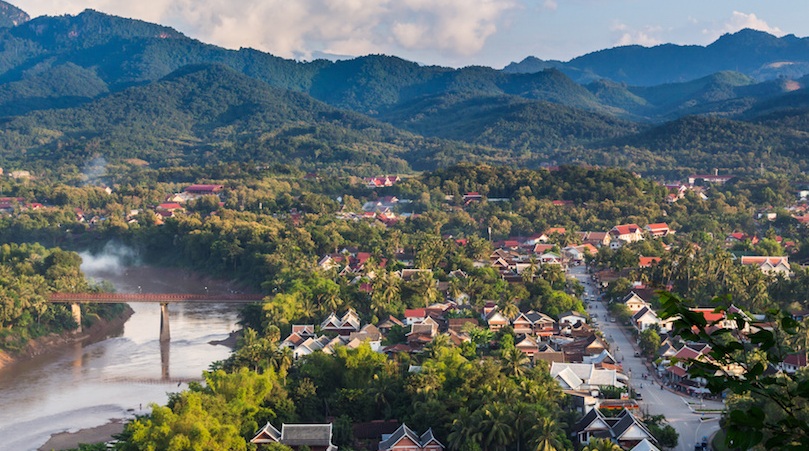
It is undoubted that the former royal city of Luang Prabang is the most famous and alluring destination in Laos. A journey to Laos would not be completed without a visit to Luang Prabang. Unspoiled by modernization, it is a throwback to a simpler time. Luang Prabang shows a warm welcome to all travelers searching for a peaceful vacation. There is not any other place in the world like Luang Prabang with over 100 temples and monasteries and a population of only 25,000 people. Here you can find ancient Buddhist temples, incredible natural landscapes, and one of the most remarkable cultural processions every morning with silent streams of monks on the street during Alms Giving Ceremony (Tak Bat). Nearby attractions include Kuang Si Waterfall and Pak Ou Caves – a respected holy site thousands of years old filled with Buddhist artifacts.
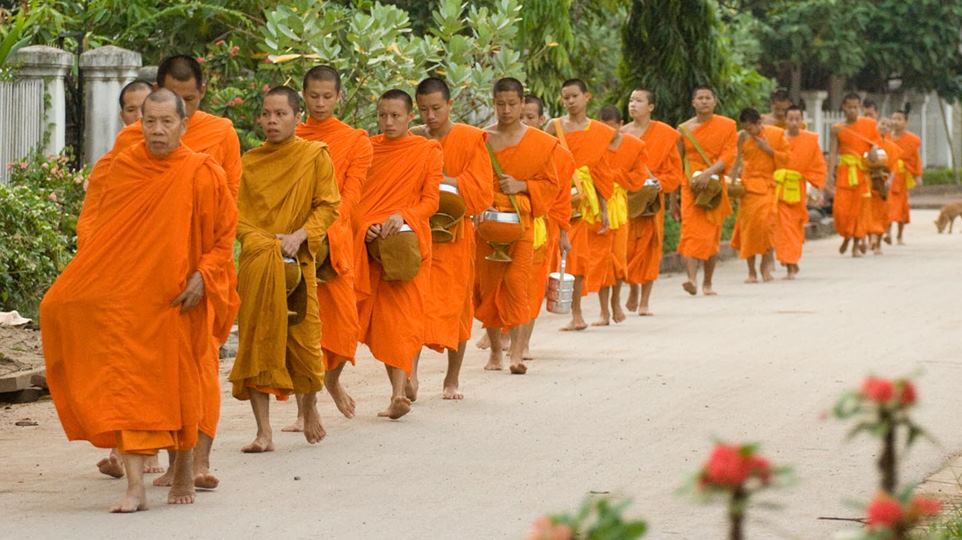
Vientiane
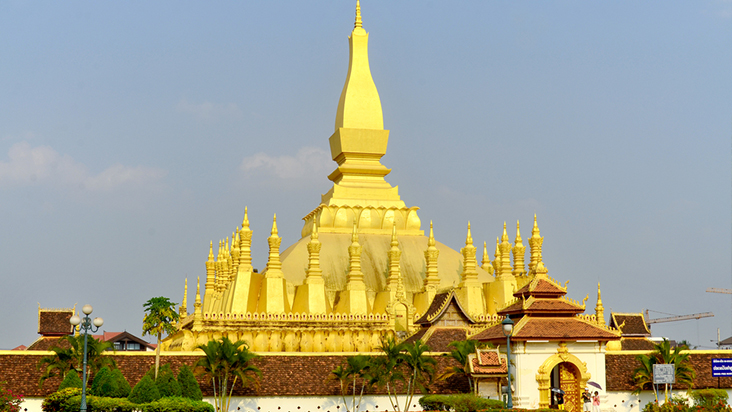
Vientiane is the first stop for most people when visiting the country and owns a wide range of hotels and many popular attractions in Laos. Along with the national symbol Pha That Luang, you can learn more about the country at the Lao National History Museum or explore valuable sculptures at Buddha Park. The COPE Visitor Centre in Vientiane is a must-visit to understand the often dubbed “secret war” in Laos and the ongoing legacy for the residents.
Si Phan Don
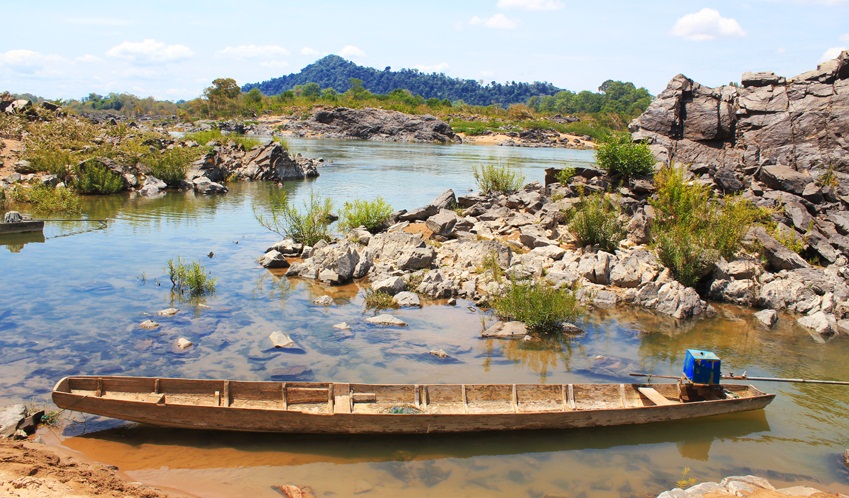
Laos is notorious for its relaxed lifestyle, but there is no place where a traveler can savor this peace better than Si Phan Don. In Laos, Si Phan Don means 4,000 Islands (Four Thousand Islands). Located in Southern Laos, Si Phan Don is where the Mekong breaks down into many rivers and channels, forming thousands of tiny islands, as its name. Boat transportation is the only way to navigate among the islands and to either shore of the mainland throughout the tranquil Si Phan Don. The inhabitants of Si Phan Don are the families of boatmen and fishermen who learned how to be vastly self-sustainable by utilizing the small landmass provided by the island and the abundant wildlife of the river. The three principal islands that cater to tourists are Don Det, Don Khon, and Done Kong.
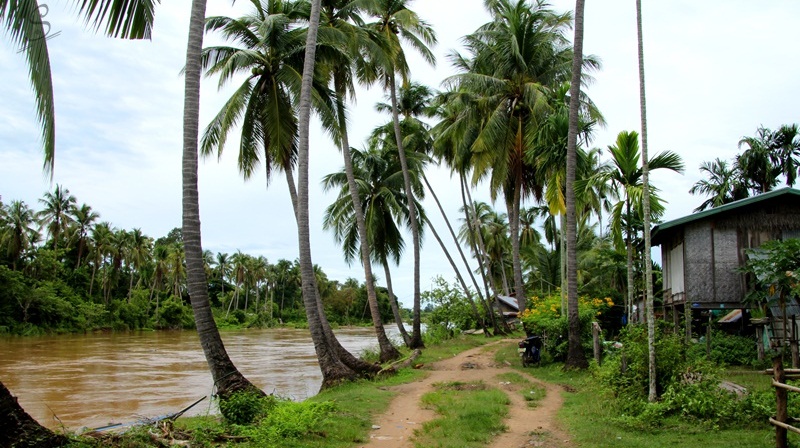
Most of the lodging available consists of simple, family-run bungalows. Bikes and kayaks can also be rented here. It is an area that is secluded, serene, and wonderfully relaxing and is the perfect place to escape and spend your days lying on a hammock, reading a book, and enjoying its natural beauty. Life in Si Phan Don is as slow-paced as they say and people as friendly as always. You rent a bicycle and they do not even give you a lock or ask for a passport as collateral because nothing of a larger size can be moved out of the island without someone noticing. Besides coming here to kick back, another big draw is the Khone Phapheng Falls and the small population of the highly endangered Irrawaddy dolphins lives in the area of Mekong River below the falls.
Plain of Jars
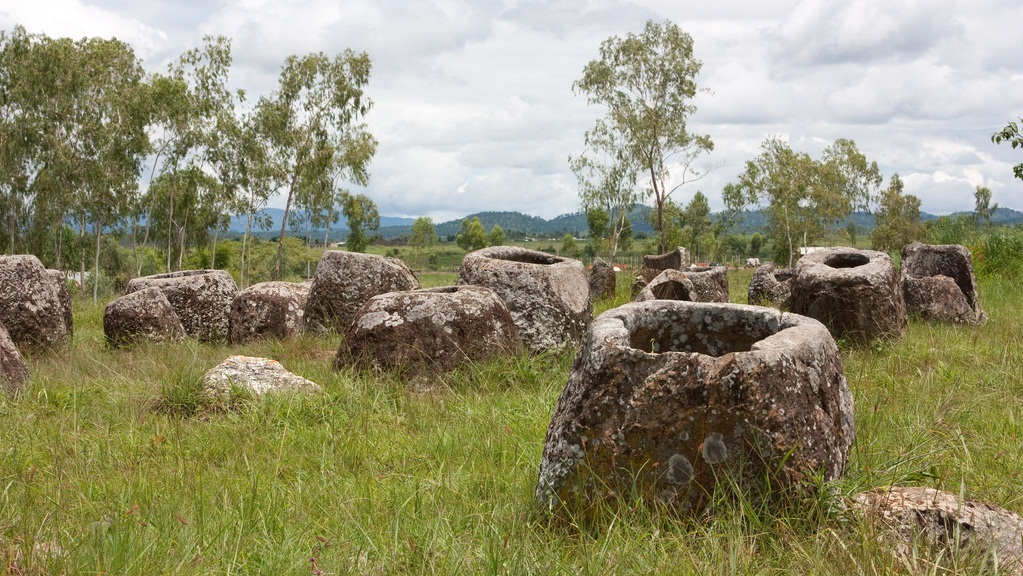
This is one of the most intriguing landscapes in the world dating back to the Iron Age. The fields along the northern edge of Truong Son mountain range are home to thousands of exotic stone jars scattered on the arid ground of Xieng Khoang plateau, forming a famous historical site in Laos. The truth is people do not know exactly when and why the jars were here, do not have any idea about civilization carved on a stone jar from which era. Speculated to have once served as funeral urns, their true purpose remains a mystery till today. It is also a site of what is known as the Secret War, the time during the Vietnam War when Laos was devastated by bombings, the effects of which are still apparent today. Spending your day in Xieng Khouang during your stay in Laos, you surely have unforgettable memories in this historical mystery land.
Mekong River
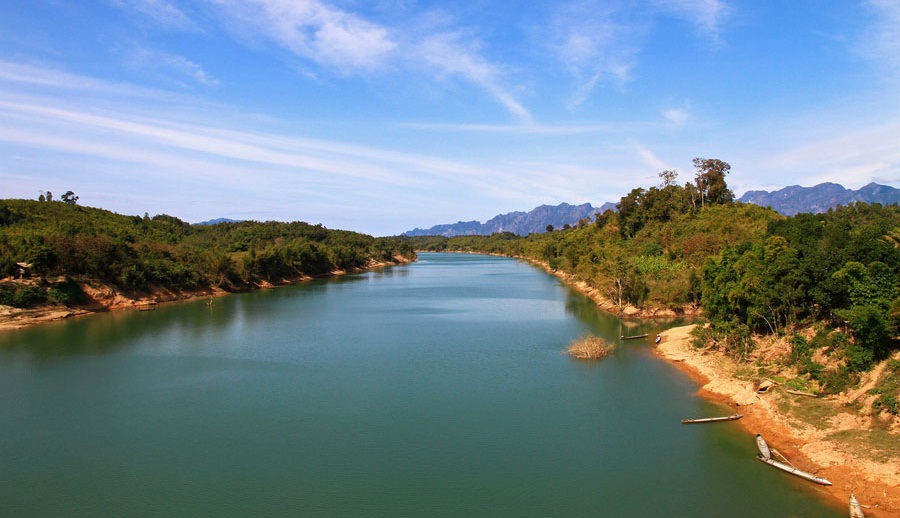
The mighty Mekong River once acted as Laos’ major highway and remains one of the best sights of Laos. The Upper Mekong in Laos is considered one of the most stunning journeys of the entire river. To see why so many have fallen in love with the country, you should take a river cruise along the Mekong River (in Laos part only or run through exotic Indochina). The region is dotted with idyllic villages, farming regions, and bustling market towns that help tell the story of Laos. At the end of the journey, travelers will have an in-depth understanding of life along the river and the people who depend on it.
Vang Vieng
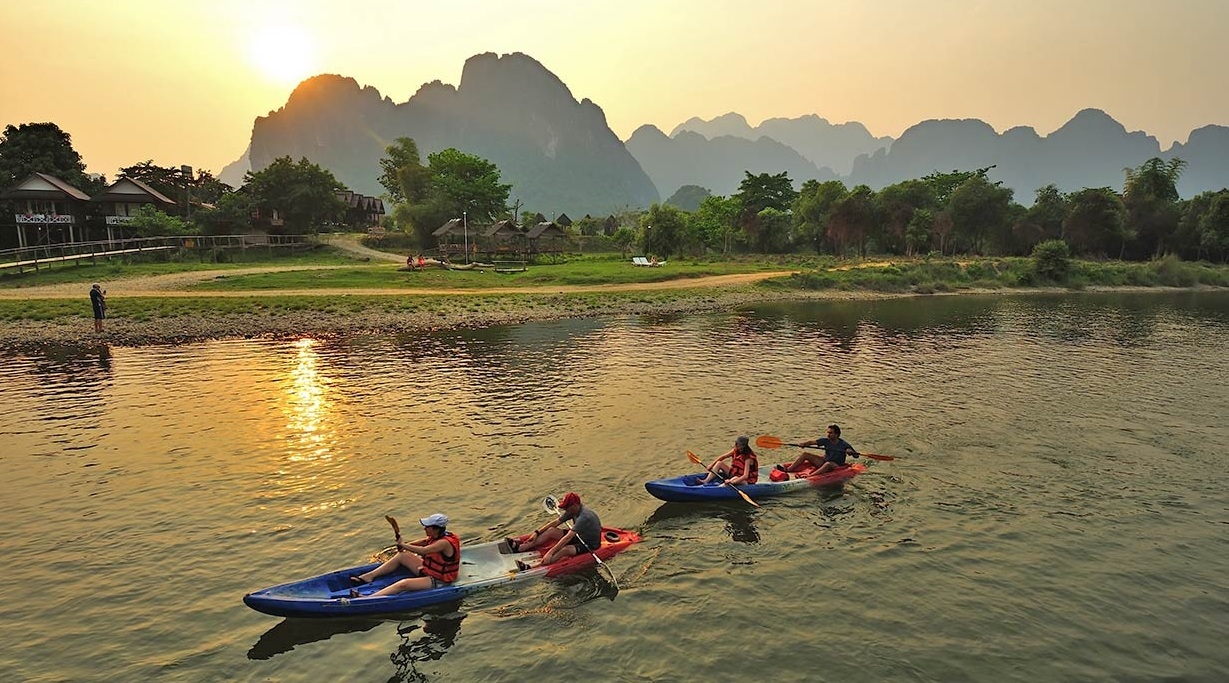
Not to mention tubing and a crazy backpacker party scene, Vang Vieng for many travelers is simply a piece of heaven on earth. The striking scenery and backdrop are worth the visit alone. Surrounded by a splendid karst landscape and overflowing with activities such as trekking, kayaking, caving, and tubing down the Nam Song River, many travelers extend their stay here far longer than planned. So if you visit Vang Vieng, you should give at least one day to explore the surrounding area by scooter or bike. A scenic ride through the Vang Vieng countryside leads to the blue lagoon and the Tham Poukham Cave. What you will find is a small lagoon with beautiful teal waters and a cave where you can see the pictured reclining Buddha.
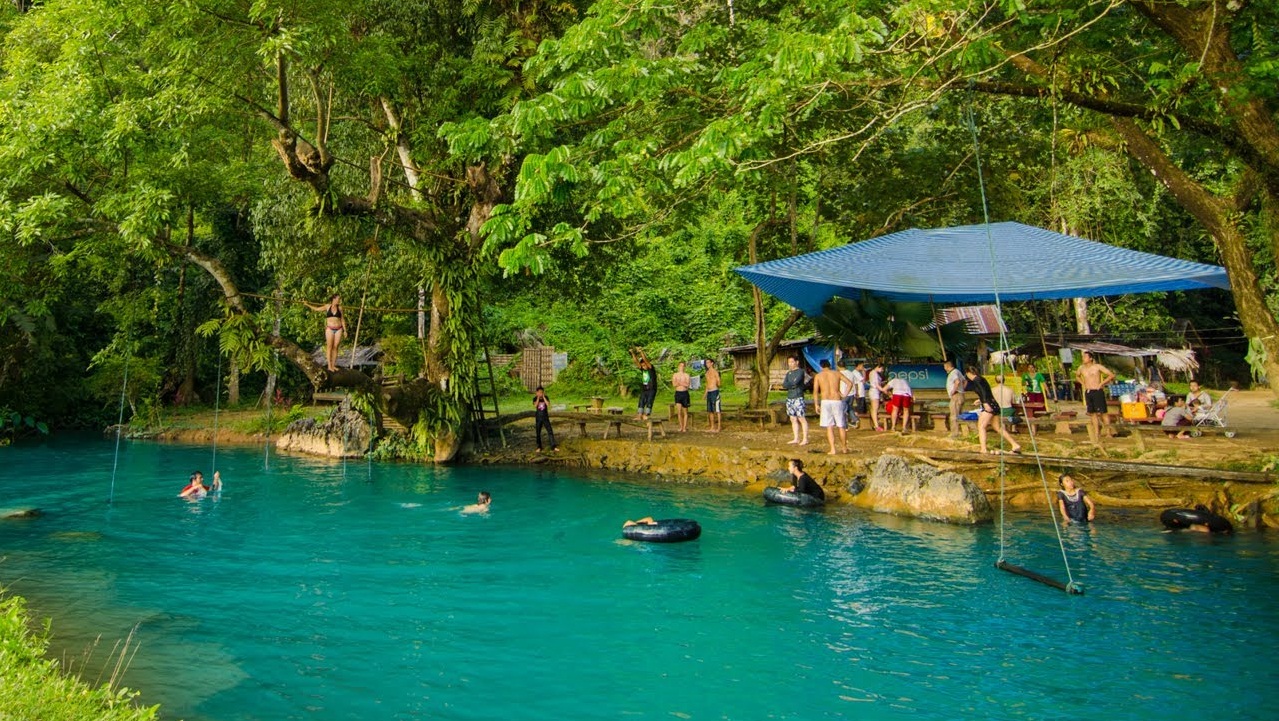
Bolaven Plateau
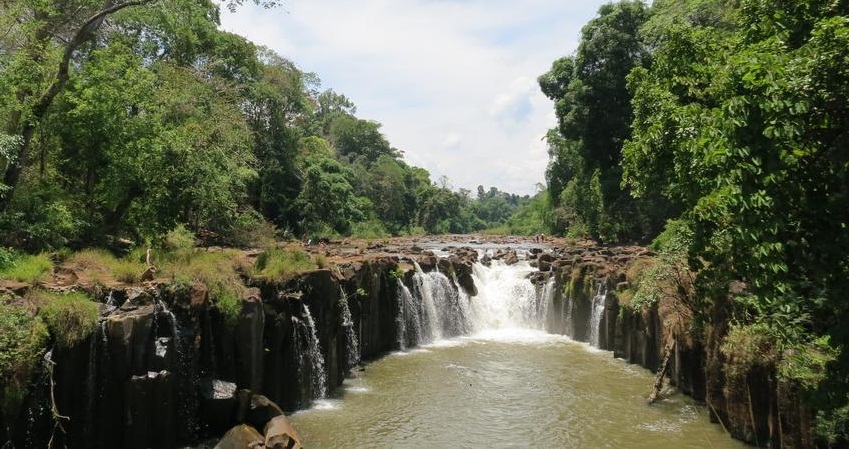
The South of the country has much fewer tourists than the North and feels far off the beaten path. Running through this region is the Bolaven Plateau, home of coffee plantations, breath-taking landscapes, tribal villages, and the friendliest people you have ever met. Here you’ll find a national park filled with lush rainforest and some of Southeast Asia’s most spectacular waterfalls. The most popular falls here are Tad Fane and Tad Nguing (Yuang) which are easily accessed by motorbike from Pakse. One thing for sure: exploring the Bolaven Plateau is an actual adventure. It pushes you out of your comfort zone and makes you realize how amazing you can be
Laos Currency
The official national currency in Laos is the Kip (LAK). The symbol for the Lao Kip is ₭. The banknotes currently in circulation are 500₭; 1.000₭; 2.000₭; 5.000₭; 10.000₭; 20.000₭; 50.000₭; and 100.000₭. No coins are currently in use in Laos
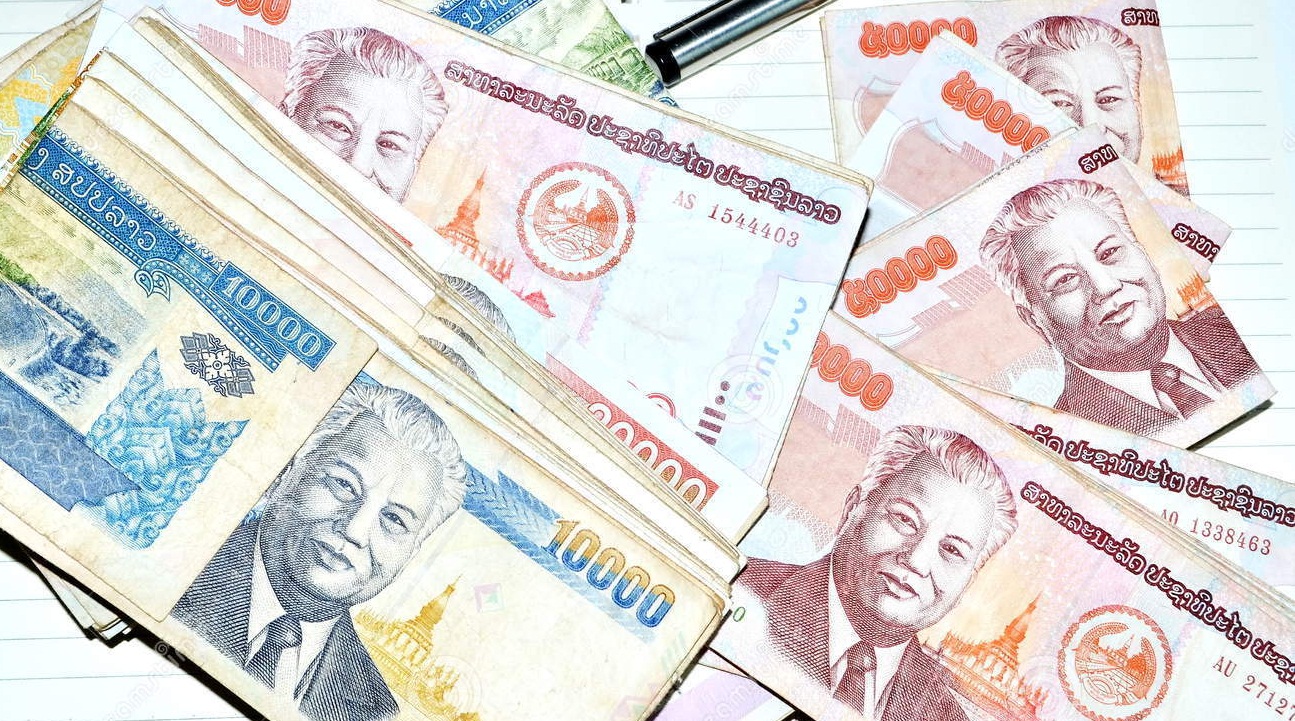
The best currencies to carry for changing to Laos Kip are US dollar, Thai baht, Euros, UK Pounds, and Canadian and Australian dollar. USD and Thai Baht can be exchanged almost everywhere (in markets, mini markets, and smaller stores in provinces) and can pay for large purchases, while other international currencies can only be exchanged at banks and some licensed moneychangers in major towns. The exchange rate is around: 1 USD = 8171 LAK, 1 EUR = 9365 LAK and 1 THB = 229 LAK.
USD and Thai Baht are widely accepted in Laos. In up-market restaurants and hotels, bills are often presented in three types of currency (Lao Kip, Thai Baht, and US dollars) for your convenience. If you plan to go to remote areas, it is recommended that you should exchange enough of your money to Lao Kip to cover your trip as you will not find currency exchange units outside of the capital towns of provinces, and Kip might be the only currency excepted.
It is also a good idea to carry a reasonable amount of smaller bills of Laos currency (1.000 to 20.000 Kip bills are good) to avoid hassle because local traders (especially in the countryside) often do not have enough pence.
Credit cards are accepted at most major hotels and high-end restaurants and shops in Vientiane Capital and some major tourist cities in Laos.
Most banks in Laos now offer ATMs. Lao ATMs dispense only Laos currency (LAK) and the daily limit is only up to 8 million kips (1000 USD). If you want to cash US dollars or Thai Baht or if you want to cash a large amount, it is better to go to the bank and use their service. Banking hours are Monday to Friday, 8:30 am to 3:30 pm.
(*) Don’t be surprised if you are given sweets or candies instead of your 500 Kip change, it’s a common occurrence as 500 Kip notes sometimes run short.
How to travel to Laos
Landlocked Laos is easily accessed from most of its neighboring countries, either overland or by flying. Note that a visa on arrival is not available at all overland entry points. For more details, you should check locally for the most up-to-date information.
- By airway
Flying is the easiest way to get into Laos. If you fly through international connections, you most likely will find that it is easier to arrive in Bangkok first. Bangkok connects well with Laos to the airports of Vientiane, Luang Prabang, and Pakse. The international airports at Vientiane and Luang Prabang are served by Lao Airlines and a few others, including Air Asia, China Eastern Airlines, China Southern Airlines, Thai Airways, Bangkok Airways, and Vietnam Airlines. Pakse is the third international airport with flights to/from Siem Reap as well as to/from Ho Chi Minh City.
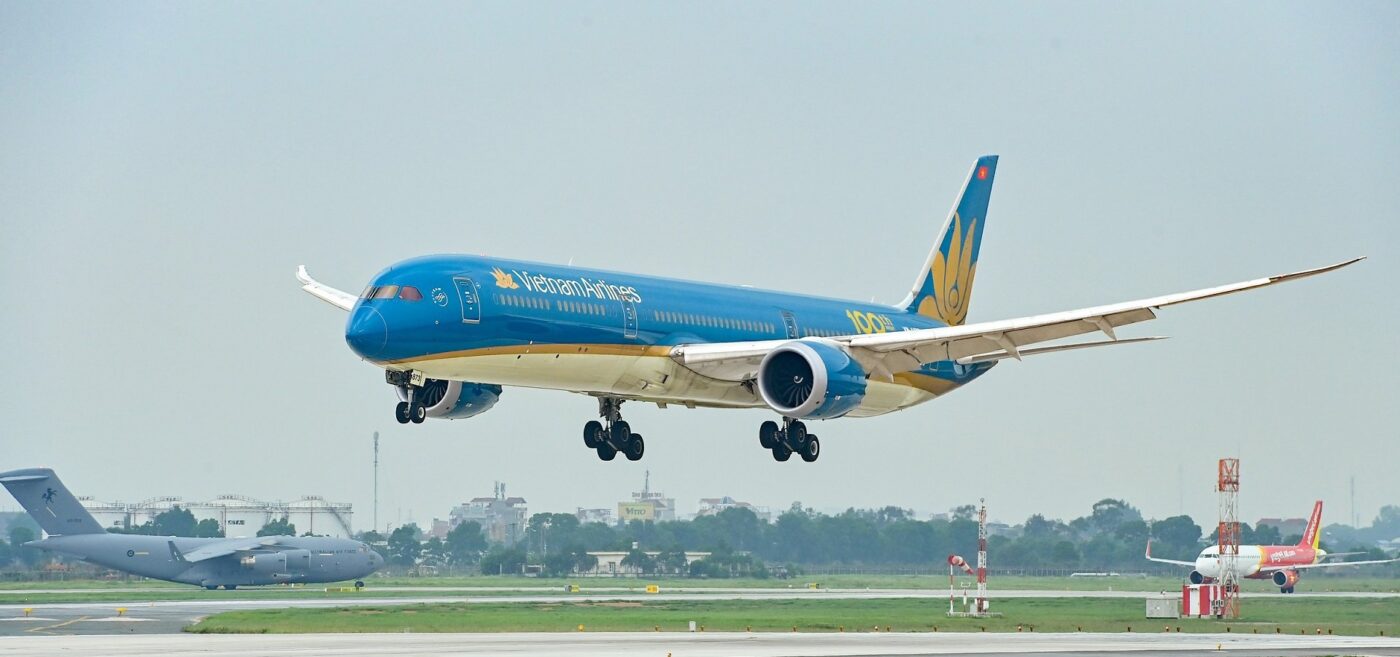
- By road
+ From Thailand:
From Chiang Mai and Chiang Rai, you will need to go to the Chiang Khong border crossing in northern Thailand to reach Houay Xay in Laos.
You can also take a train or bus to and from Ubon Thani. From here you can easily make your way to Nong Khai border town. You will have to cross the Friendship Bridge into Vientiane.
If you want to travel to southern Laos, you will have to access Laos via Ubon Ratchathani in Thailand and travel on to the border town of Chong Mek. This border town will bring you to the southern Laos town of Pakse.
+ From Cambodia: Stung Treng in Cambodia is connected to Pakse and the Si Phan Don (4000 islands) region of Laos by the Voeung Kam – Dom Kralor border. This will take about 6 to 7 hours to reach Phnom Penh city by bus or taxi.
+ From Vietnam: It is easy to arrange from major cities in Vietnam. Hanoi, Hue, Danang, Hoian, Saigon, and other cities provide good bus connections into Laos. You can buy bus tickets in many big agencies and also get your visas there.
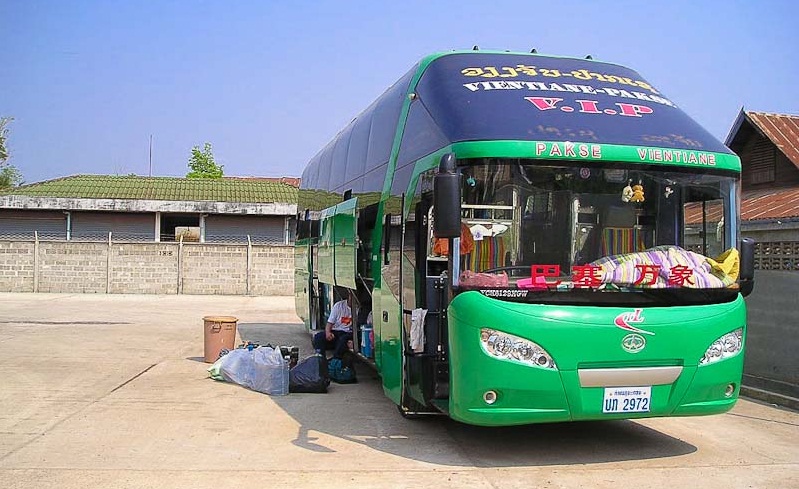
+From China: The land crossing between Mengla (Yunnan) and Boten (Laos) is open to foreigners and they will issue a visa on arrival (about 37 USD depending on nationality). You can also get an advance visa in the Laos Consulate in Kunming. There is a daily bus service that operates from Mengla to Luang Namtha and Udomxai. Buses leave from the North Bus Station in Mengla and will cost you about 40 RMB (6.5 USD).
By railway
It is easy to travel from Bangkok to Vientiane by train, using the daily overnight sleeper train from Bangkok directly to the Thanaleng Train Station in Laos then catch a local bus or tuk-tuk to central Vientiane; or you can use any of Bangkok – Nong Khai trains then making your own way by bus or taxi between Nong Khai and Vientiane.
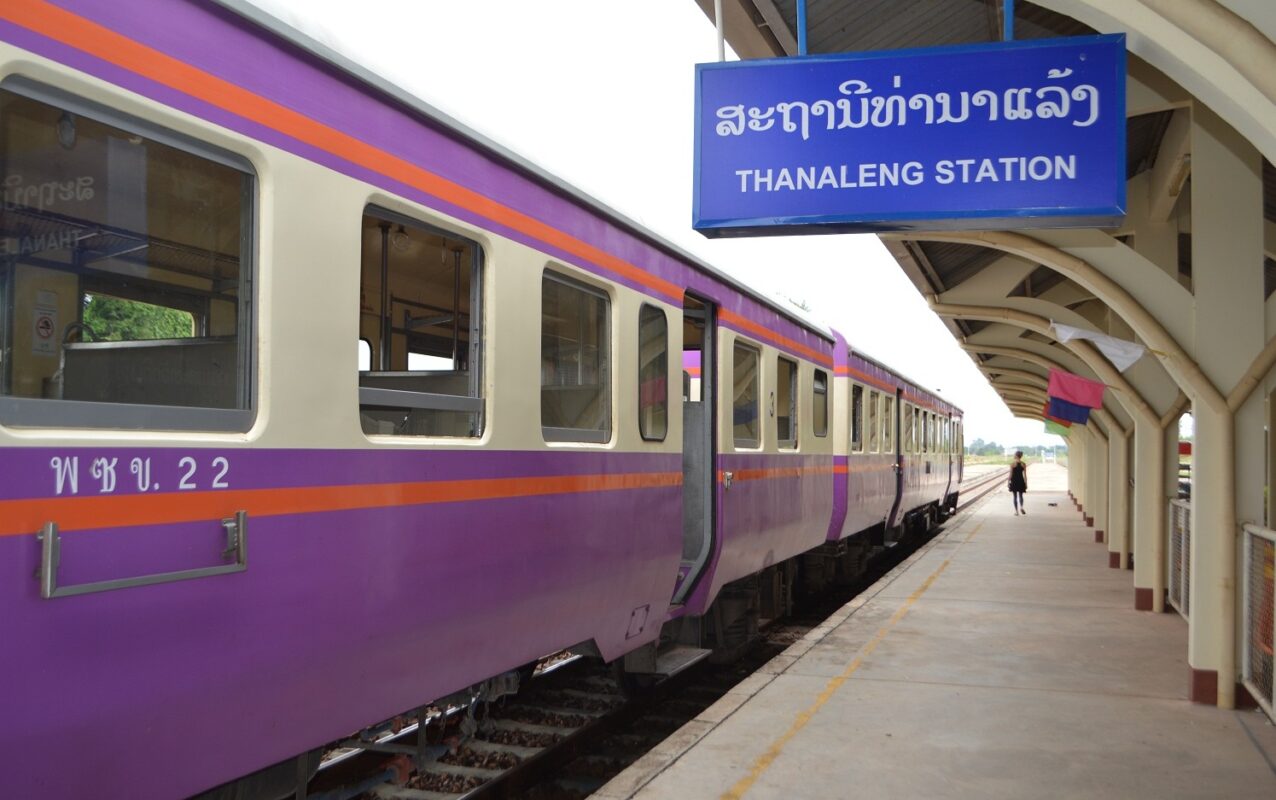
Laos local transportation
Laos is not easy to travel around due to its mountainous terrain and lack of decent public transportation. Getting around in Laos takes time, and usually, more than you may have planned.
Laos owns a number of modern transportation systems, including several highways and a number of airports. As a landlocked country, Laos has no port or harbor. Laos depends primarily on road transport and, to less extent, on the river and air transport.
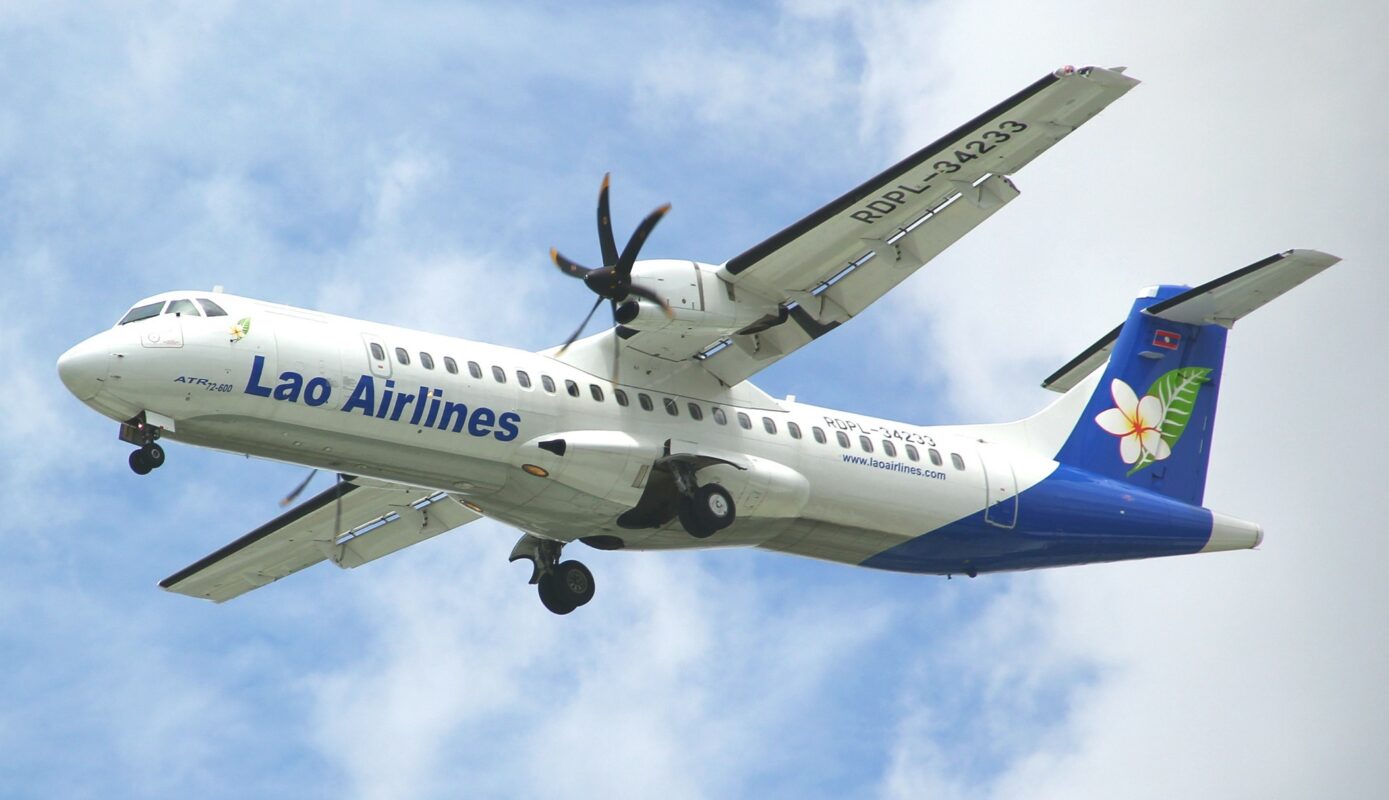
Flying is by far the most convenient yet most expensive way to move between regions. Laos has a very small air travel industry, but things are rapidly growing as more flights service an increasing number of towns across this country. Domestic air services by Lao Airlines use ATR or MA60 aircraft between Vientiane and Luang Prabang, Pakse, Xiengkhuang, Oudomxai, Huay Xai, Luang Mantha, and Savannakhet; between Luang Prabang, Huay Xai and Xiengkhuang; and between Pakse and Savannakhet. During the rainy season, additional flights are made to access-limited locations. Another state-owned airline – Lao Air flies 10-seat Cessna aircraft on a regular basis to three remote provinces: Houaphan, Phongsali, and Xingabury. In addition, there is a privately owned charter helicopter service.
Historically, the primary mode of transport around the country was via boat with most of the country’s major towns linked by a network of rivers. Nowadays, many smaller towns are serviced by passenger boats and in some parts of the Mekong, large cargo boats do the heavy lifting that road transport simply cannot do.
Travel by road is the dominant mode of transportation in Laos. Many travelers choose to use the bus system which is incredibly cheap and covers nearly every town in the country. The travelers will have a lot of choices on road No.13 (between Oudomxay – Luang Prabang – Vientiane – Paksane – Thakek – Savannakhet – Pakse) with air-conditioned bus or local bus. For the rest of the country where the roads are not in good condition, converted pick-up trucks without air conditioning (locally called “sawng thaews” or “two-row seat”) are used for public passengers. Buses in Laos are cheap but slow for a number of reasons (the buses are old, the roads are narrow, and they stop very frequently to pick up passengers…)
To support a local bus system, a “sam law” (three-wheel) vehicle can be a quick and efficient way of getting around. The various three-wheeled taxis found in Vientiane and provincial capitals have different names. Larger ones are jumbo and can hold 4 to 6 passengers on two-facing seats. In Vientiane, they are sometimes called tuk-tuks. These three-wheeled conveyances are also labeled simply taxi or, usually for motorcycle sidecar-style vehicles.
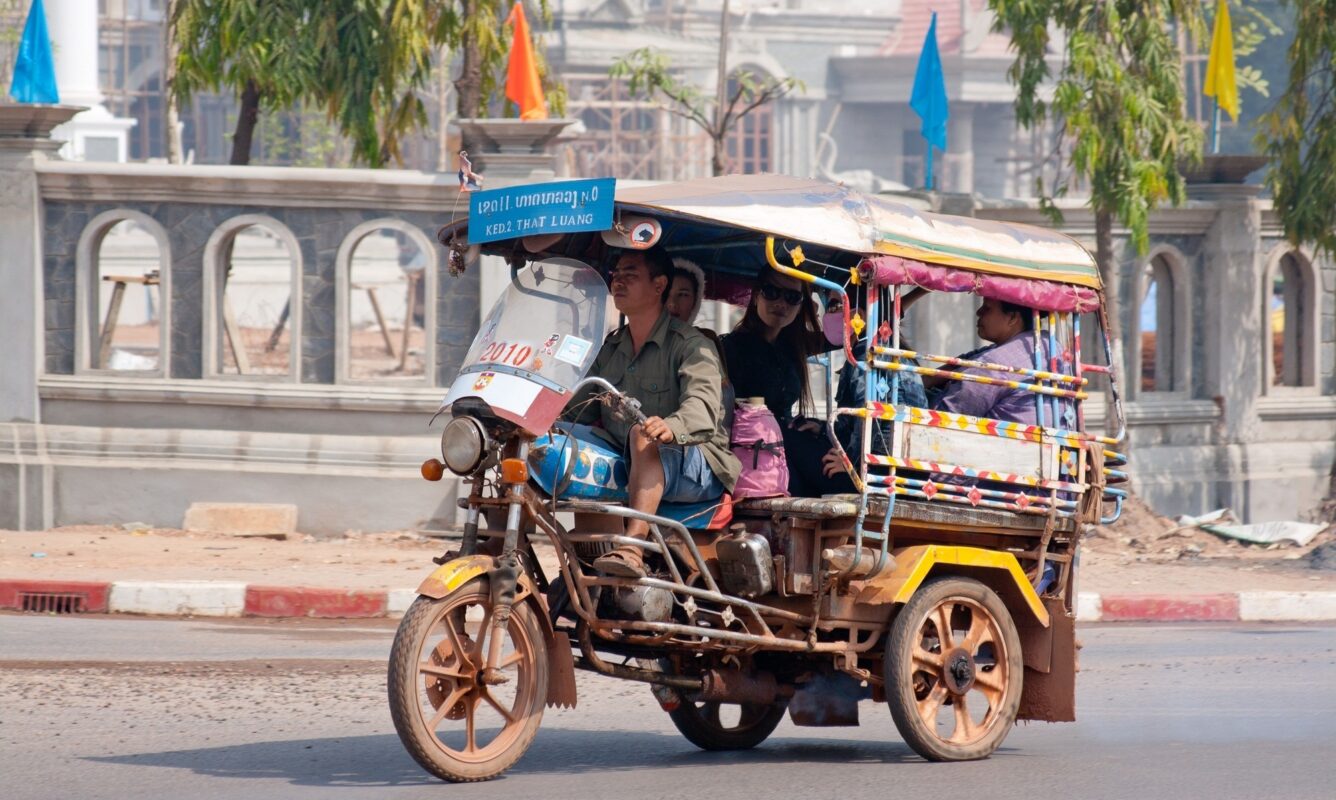
Rail transport does not play a significant part in Laos’s transport sector, since the country largely lacks the required infrastructure.
Laos Visa
Visitors to Laos must obtain a visa from one of the Laotian diplomatic missions unless you hold a passport from one of the ASEAN member states or Japan, South Korea, Russia, Luxembourg, Switzerland, and Mongolia.
Visitors of other nationalities may obtain a visa on arrival valid for 30 days (extendable once) if arriving at one of the following airports: Vientiane Wattay International Airport, Luang Prabang International Airport, or Pakse International Airport. Visas on arrival take just a few minutes to process and cost around 35 USD, depending on your nationality. A Visa on arrival is usually a tourist visa (good for 30 days stay). The good news is that you probably will not need to arrange it in advance; 30-day visas are now available on arrival at most international land border crossing points and Lao-Thai Friendship Bridges in Vientiane, Thakaek, and Savannakhet. Visa can also be obtained on arrival at the Tha Naleng Train Station in Vientiane. If you intend to enter Laos as a tourist, this is the most convenient way to get your Laos visa. Note that all visitors must hold a passport that is valid for at least six months from the time of entry into Laos.
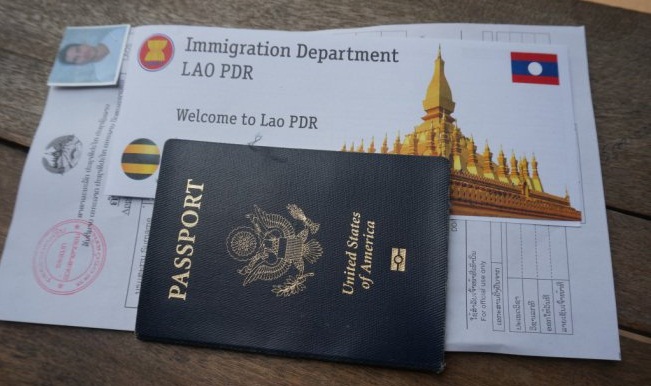
You can also apply for visas in advance from Laos embassies. Be sure to get an entry stamp on arrival and an exit stamp upon leaving – double-check the date stamps. If you obtain a visa in advance, it costs around 50USD, but again this varies according to nationality.
Visas are usually valid for 30 days. If you obtain a visa in advance from the embassy, it is generally valid for a 30-day stay within two months of issue.
Although Thai Baht is also accepted, paying your visa fee in US dollars is recommended. If you chose to pay in Thai Baht, it will cost you around 1500 Baht which is roughly 46 USD. One thing to remember when in Laos is, if you want to save, it is better to pay in the currency quoted whether it is USD, Lao Kip, or Thai Baht to avoid converting from one currency to another.
You can extend your 30-day tourist visa up to an additional 60 days for a fee of 2 USD per day through the Department of Immigration in Vientiane. If you overstay, you will have to pay 10 USD a day on exit for every day over.
Adults traveling alone with children should be aware that they may be required to produce documentary evidence of parental responsibility before entering the country. Bring paperwork just in case.
Travel Packing List Suggestion
Travelers should adjust the contents of their luggage according to the season and regions they will find themselves in or the activities that they intend to do. The first step to forgetting nothing is to establish a list of everything that you must carry in your bag: clothes, underwear, shoes, important documents, camera, chargers, toiletry kit, medicine kit, and a good book for hours waiting at the airport.
Travelers should adjust the contents of their luggage according to the season and regions they will find themselves in or the activities that they intend to do. This Laos packing list below will give you an outline of what you need to pack. Of course, it depends very much on your personal style of travel in Laos.
– A padlock to secure your luggage
– Casual clothes (warm clothing for winter and light clothing for summer); a plastic bag for dirty clothes. To respect local culture, choose items like knee-length shorts, long skirts, and tops with sleeves and modest necklines, which are also ideal for wearing in temples. Also, keep a raincoat in your daypack in case it starts raining during your travels (especially in June – October). If you want to swim, bring some swimsuits. Lao people often wear T-shirts and shorts; however, it’s generally accepted that tourists will swim in swimwear.
– Good walking shoes/sneakers and socks, or sandals (good hiking boots if you tend to attend an adventurous tour).
– Try to bring an adequate amount of cash with you (Lao Kip, small US dollar bills, Thai Baht). Laos has ATM machines, but they are only sparsely located in Luang Prabang, Vientiane, Houayxay, and Vang Vieng. Travelers’ cheques are the safest way to carry larger amounts of money. Use a money belt to carry cash, credit cards, passport, and airline tickets…
– Sun protection (sunglasses, sun cream, a hat, or an umbrella), mosquito repellent or bug spray, a small bottle of anti-bacterial hand gel, baby powder (good for absorbing sweat in your face and neck), etc.
– Do not take valuable items like jewelry, branded watches to avoid theft and to show respect to local people by not showing off expensive things.
– Having a map of Laos on either your cellphone or as a hard copy will be a great idea.
– Camera or camcorder with lots of storage space because you will want to take plenty of pictures, as there are many spots worth photography that you will visit within Laos. Bring compact binoculars if wildlife is your thing.
– Travel Insurance is not very expensive and can help you get home or to a country with better medical care if you need to.
Shopping in Laos
Laos is an excellent destination for anyone interested in picking up elaborate handicrafts. One of the pleasures of shopping in a non-industrial country like Laos is the availability of hand-crafted goods.
Handicrafts are the pride of the Lao people. Buying locally-made Laos products is a good way to contribute to the local economy and helps preserve traditional crafts, many of which are products of the different hill tribes in Laos. These include a range of hand-woven and dyed textiles with designs that are unique to a region or tribe. Other traditional trades and crafts include wood and bone carving, basket weaving, saa papermaking (from mulberry bark). All are readily available within the city.
Visitors will find plenty of beautiful items to purchase. Because hand-made goods can only be produced in limited quantities, they are usually sold or exchanged in the village in which they were made. Handmade baskets, bolts of cloth, and household utensils are best acquired in villages, as everything is cheaper at the source. Prices at provincial markets are usually a bit more than what you would pay were you to buy directly from village artisans.
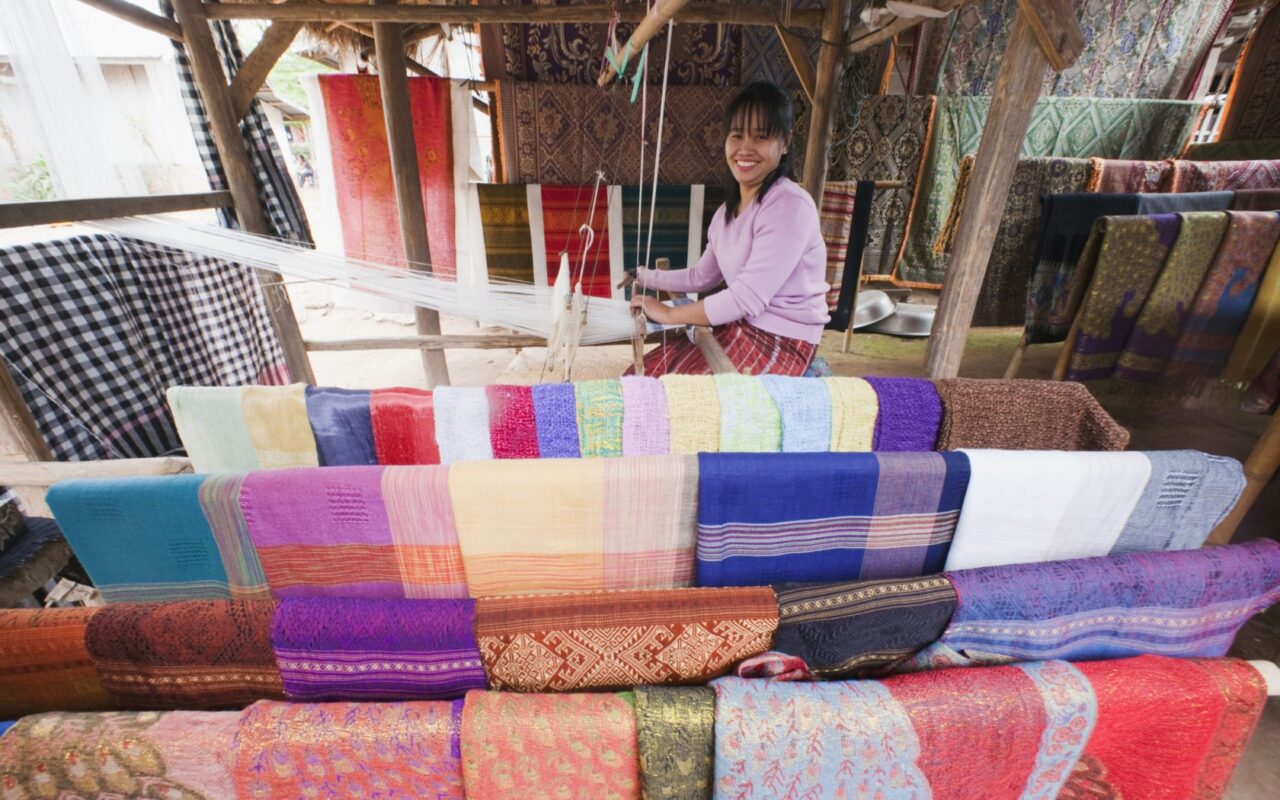
Textiles, basketry, silver, woodcarvings, and hand-made paper are some of the most popular handicrafts in Laos. The art of weaving is still very much a home industry in Laos, where some of the finest silk and cotton weavers in the world can be found in the smallest of communities. Traditional designs and patterns vary from province to province. Most notably is complex mutmee (ikot) patterns based on folklore and natural themes. Some of the best weavers come from the Tai ethnic groups in Houaphan Province. If you are planning a visit to Luang Prabang and are interested in weaving, don’t miss Ban Phanom or the night market in the center of town.
There are many antique stores littered around the bigger cities of Vientiane, Luang Prabang, and Savannakhet, where clothes, Asian pottery, musical instruments, jewelry, carvings, and coins can be found. However, tourists need to note that there is an official ban on the export of Buddha images from Laos. Fake antiques are common in Laos. You should be careful when purchase items like gemstones and high-value carpets and always remember to bargain when buying things in local markets to make sure you get the best prices.
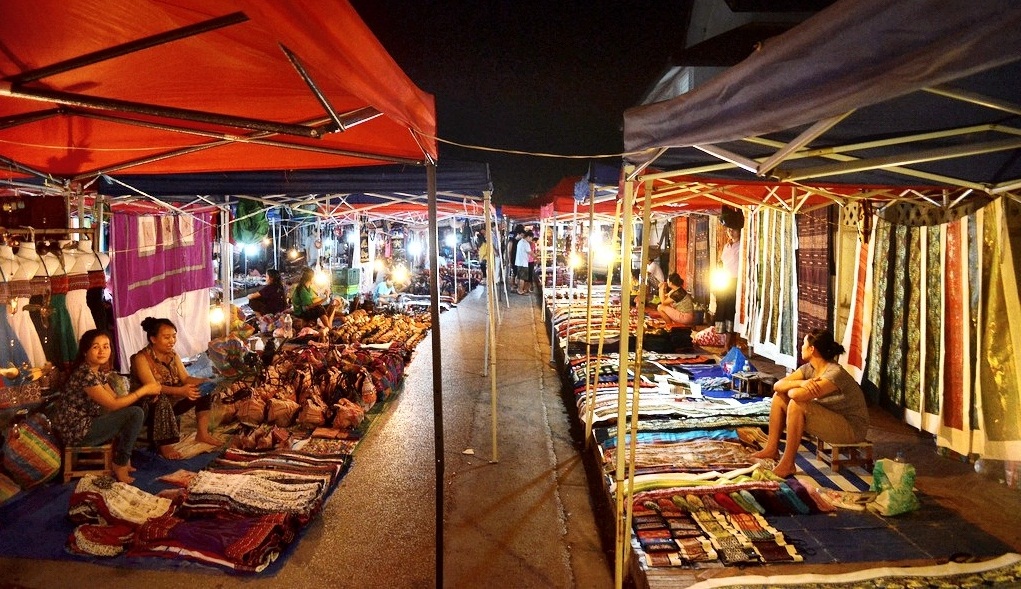
Last but not least, most shops will be closed on Sunday so you are not suggested to go shopping on Sunday.
The land border between Laos and Thailand, Vietnam and Cambodia
Laos has two types of border crossings, international and local. International crossings are generally open to all foreign nationals in possession of a valid passport and visa, while local crossings are open only to locals (on each side of the border) who are able to cross back and forth using some form of border pass.
- Laos – Thailand
There are 8 border crossings from Thailand open to foreigners:
– Nong Khai – Vientiane (Thai – Lao Friendship Bridge No. 1)
– Mukdaharn – Savannakhet (Mukdahan Province to Savannakhet Province via Thai – Lao Friendship Bridge No.2)
– Nakon Phanom – Tha Khaek (Thai – Lao Friendship Bridge No.3) (Nakhon Phanom Province to Khammouane Province)
– Chiang Khong – Huay Xai (Thai – Lao Friendship Bridge No.4)
– Tha Li – Kaen Thao (Loei Province to Sayaboury Province)
– Bueng Kan – Pakxan (Nong Khai Province to Bolikhamxay Province)
– Chong Mek – Vang Tao (Ubon Ratchathani Province to Champasak Province)
– Thai Li – Nam Hueang Local Bridge crossing Nam Heuang River.
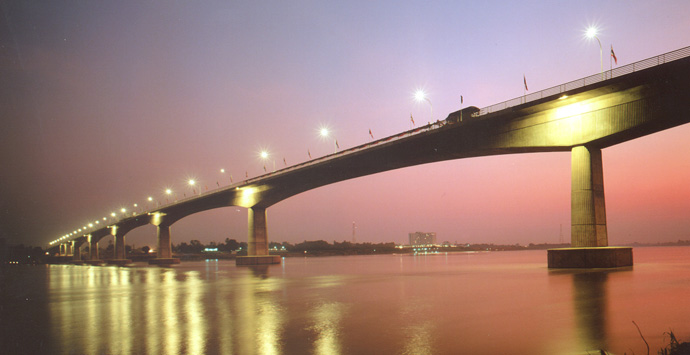
- Laos – Vietnam
From Vietnam, travelers can cross the border at these 7 Vietnam – Laos border crossing points (Visa available on arrival at Laos only)
– Lao Bao – Dansavanh: Dong Ha (Quang Tri Province) to Savanakhet
– Bo Y – Phou Keua: Kontum to Attapeu Province
– Cha Lo – Na Phao: Dong Hoi (Quang Binh Province) to Thakhek (Khammouane Province)
– Nam Can – Nong Haet: Vinh City to Phonsavan (Xiengkhuang Province)
– CauTreo – Nam Phao: Vinh City to Thakhek (Khammouane Province)
– Nam Soi – Na Meo: Thanh Hoa to Xam Neua (Houaphan Province)
– Tay Trang – Pang Hok: Dien Bien Phu (Lai Chau Province) to Muang Khua (Phongsaly Province)
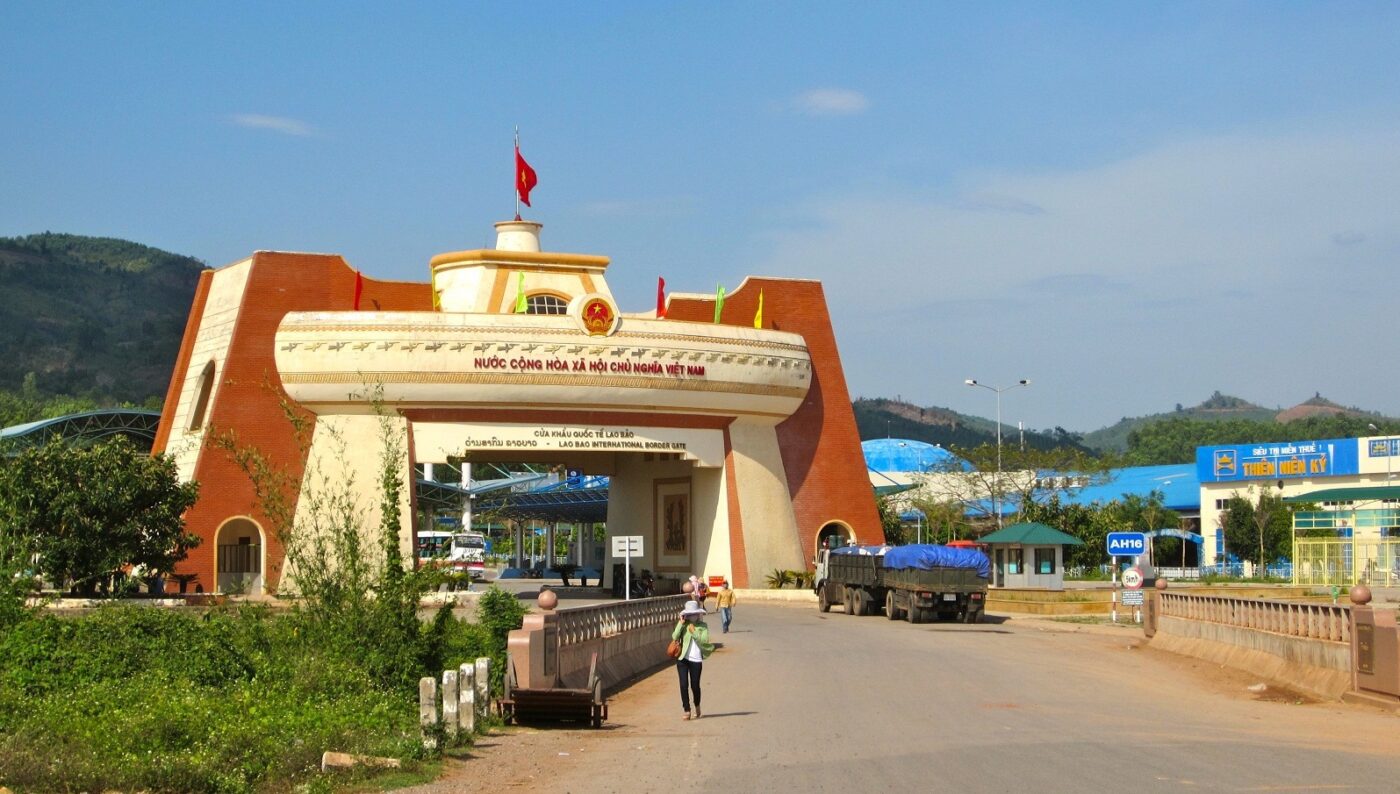
- Laos – Cambodia
There is currently only 1 official checkpoint at the Cambodia – Laos border: Dong Kralor – Veun Kham crossing. The checkpoint links the Champasak Province of Laos with the Strung Treng Province of Cambodia, where Laos’ National Road No.13 meets Cambodia’s National Highway No.7.
There are too many reasons to visit Laos. Laos is one of those special places where there seems to be no barrier between travelers and locals. It’s no surprise when you realize that Laos has one of the most chill and relaxed vibes in Asia. A journey through Laos takes you to the heart of traditional Southeast Asian culture. So if you ever make it to Southeast Asia, make sure you don’t skip Laos. Come soon, and travel slow!
Xuyen
(Image Sources: Internet)


